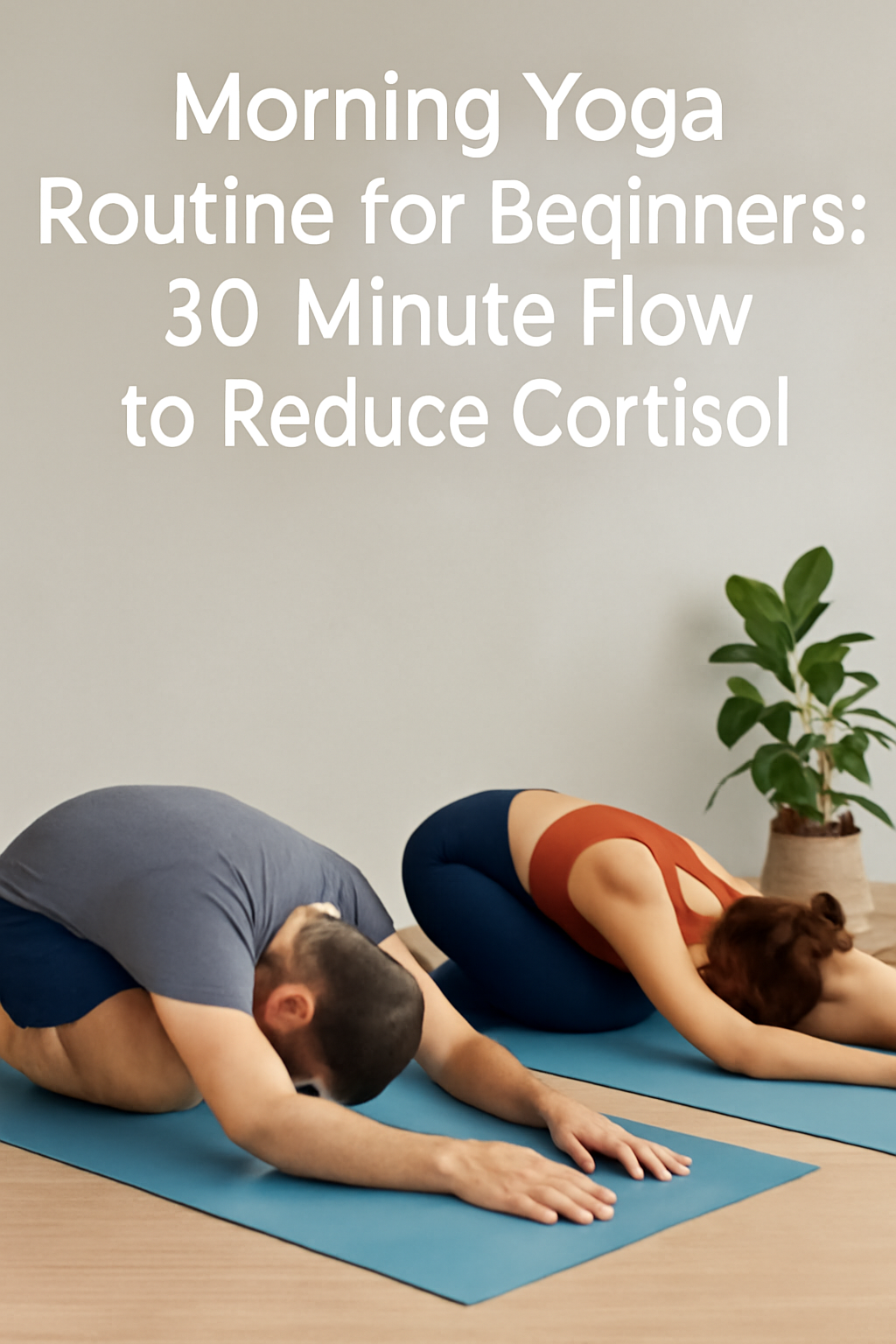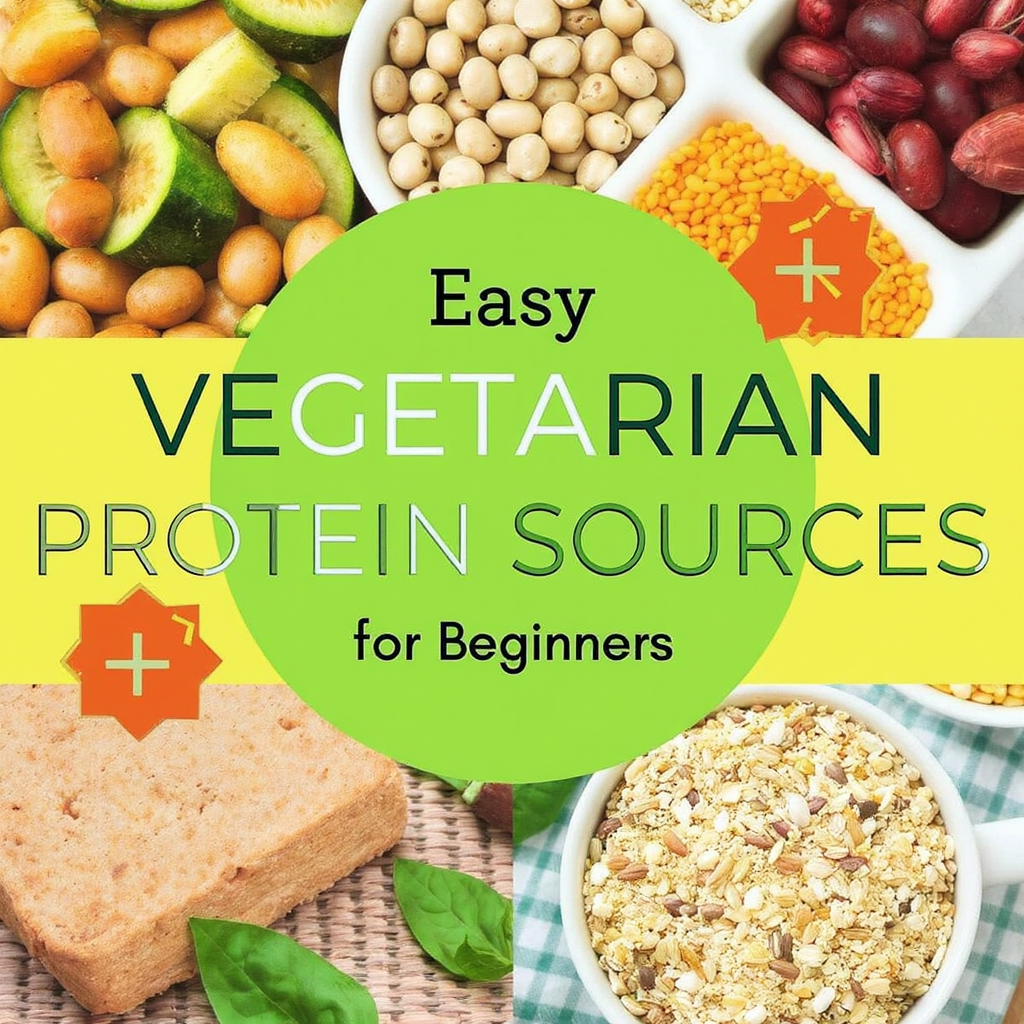Men’s & Women’s Health
Best Skincare Routine for Women | Expert Tips & Product Picks (2025)
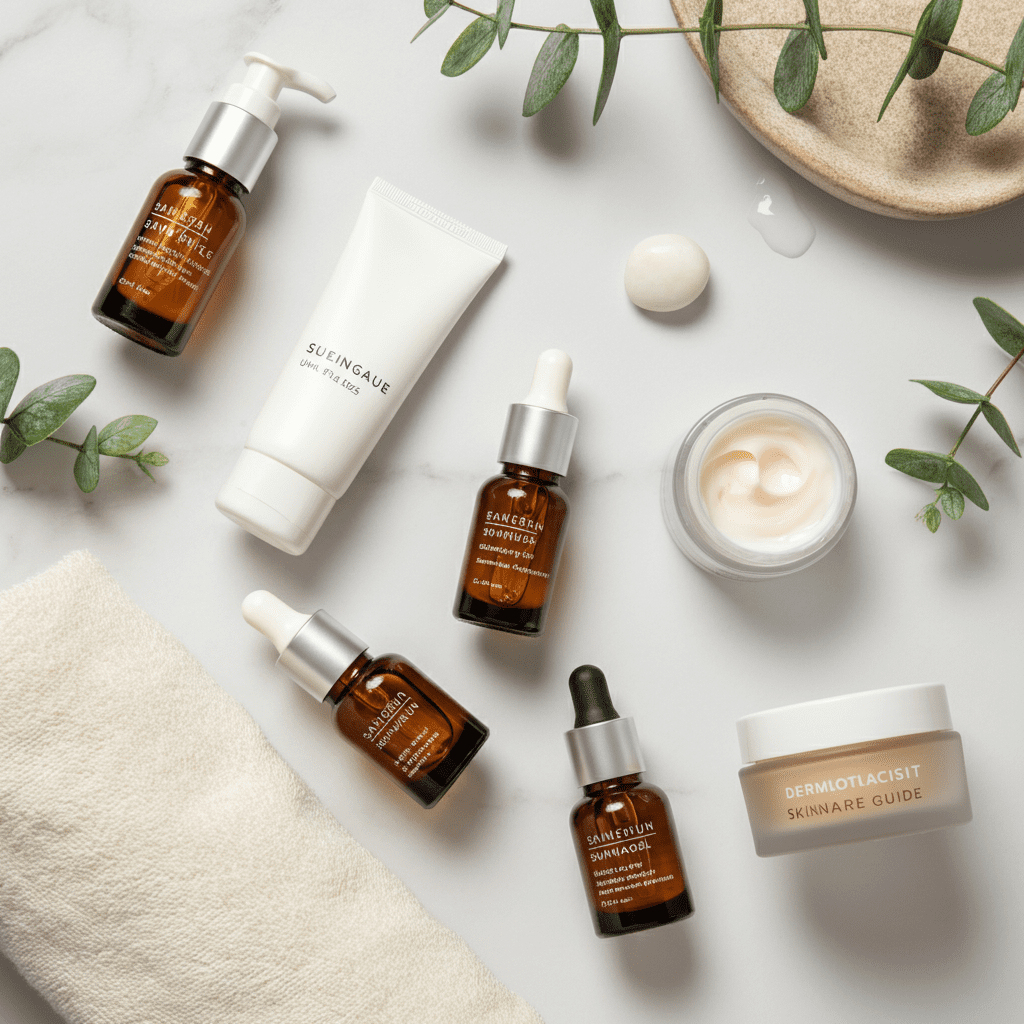
Table of Contents
It is overwhelming in the world of products and information on how to have a healthy and radiant skin. Wading through changes in hormones, or finding it surprisingly difficult to establish a habit that won t cost you an arm and a leg, it takes knowing what really works. This 2025 skincare guide makes it all easier and it is dedicated to the must-have ingredients, product recommendations, and hormonal skin changes tips. By the final note, you will feel assured of customizing the ideal skincare regimen based on your requirement.
The first thing to do to create an effective daily routine is to know what your skin really requires. Hydration, exfoliation, and barrier repair keywords become pivotal in making decisions when it is necessary to select products that would suit developing skin condition. Adding powerful active ingredients like hyaluronic acid, retinol and niacinamide can revolutionize your skin routine and perform anti-dry, anti-wrinkle, and brighten skin. Paying attention to these essential elements, you will be able to create a habit that can be adjusted to the needs of your skin.
Morning routine vs Night routine (Over simplified steps)

Morning Routine
- Start your day with a glow-recharging habit that shields against contaminating components and sun rays.
- Cleanse– A light non-comedogenic facewash helps you wash away excess oils that have accumulated overnight.
- Hydration– The skin is kept hydrated by applying a hyaluronic acid serum.
- Protect-Protect with a product filled with antioxidants, containing niacinamide to protect against environmental destruction.
- Sunblock– Complete with a broad spectrum sunblock of 30 or above against pollution care
Night Routine
- Your evening routine is based on both repair and hydration.
- Skincare-101 Deep Cleansing employs a two-step process by first using an oil-based cleansing product to remove all makeup, then follow up with a water-based facial cleanser to clear out and preserve skin barrier.
- Nourish – Think about peptides or retinoids, which heal your skin and regenerate it at night.
- Moisturize– A thicker moisturizing cream is best to use at night as you recover.
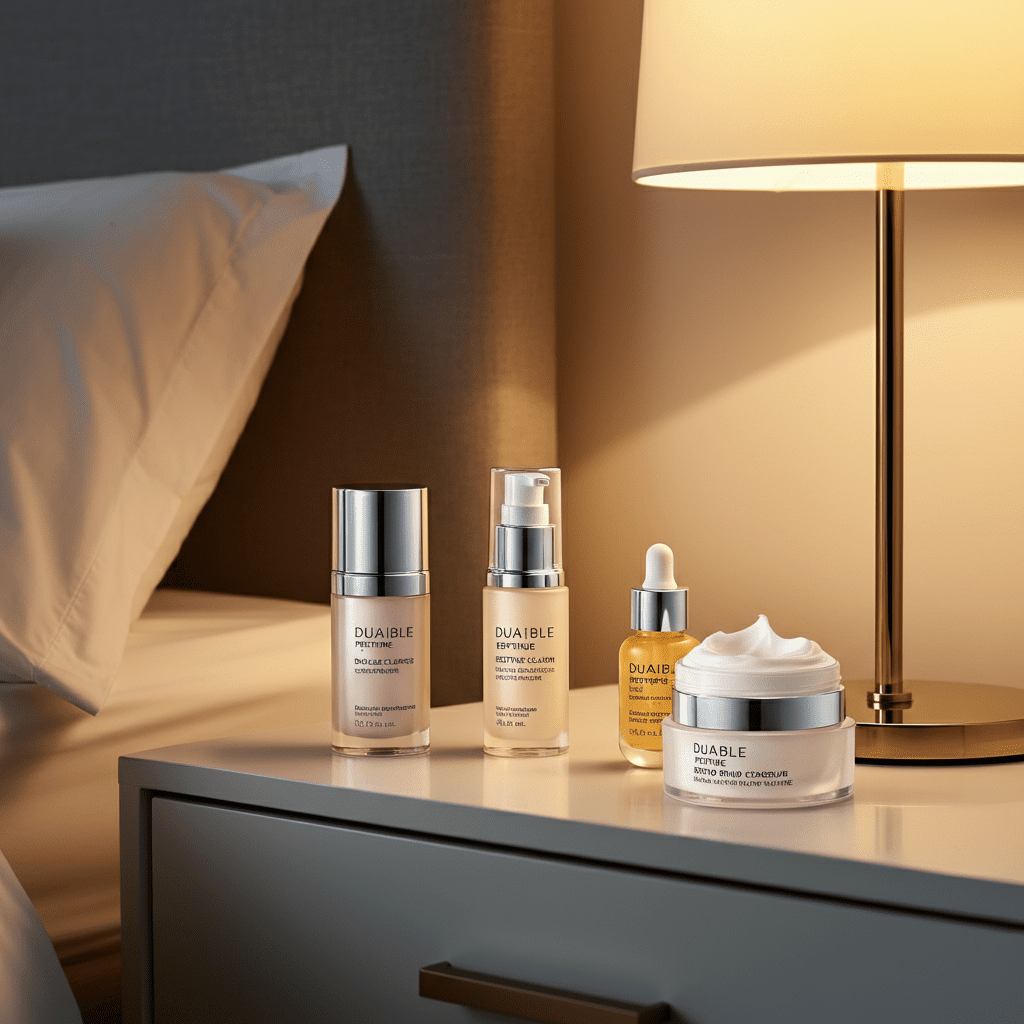
Must-Have Ingredients for Healthy Skin
It is all about knowing what your skin adores. These are the ingredients that one should have in his or her skincare routine:
Hyaluronic Acid
A moisture miracle that absorbs moisture and traps it. Suitable to dry and combinations.
Niacinamide
It makes your skin less pale, decreases redness and fortifies your skin barrier against some damages.
Peptides
These are amino acids that build collagen, and would help the skin to be smoother and look firmer.
Other ingredients of note are the skin brightening, antioxidant (such as vitamin C) and broad-spectrum sunscreens to stop ageing before it even starts.
Pro Tip: Read Product labels! Seek the words such as dermatologist-tested and non-comedogenic-do not plug the pores.
Budget-Friendly vs. Luxury Product Recommendations
Cleansers – Your wallet-friendly and barrier-repairing cleansers will be either CeraVe or The Ordinary.
Serums– Hyaluronic acid The hyaluronic acid this company offers is great hydration at a great price.
SPF Try Neutrogena sunscreen line to get reliable sun protection without spending much over 20 dollars.
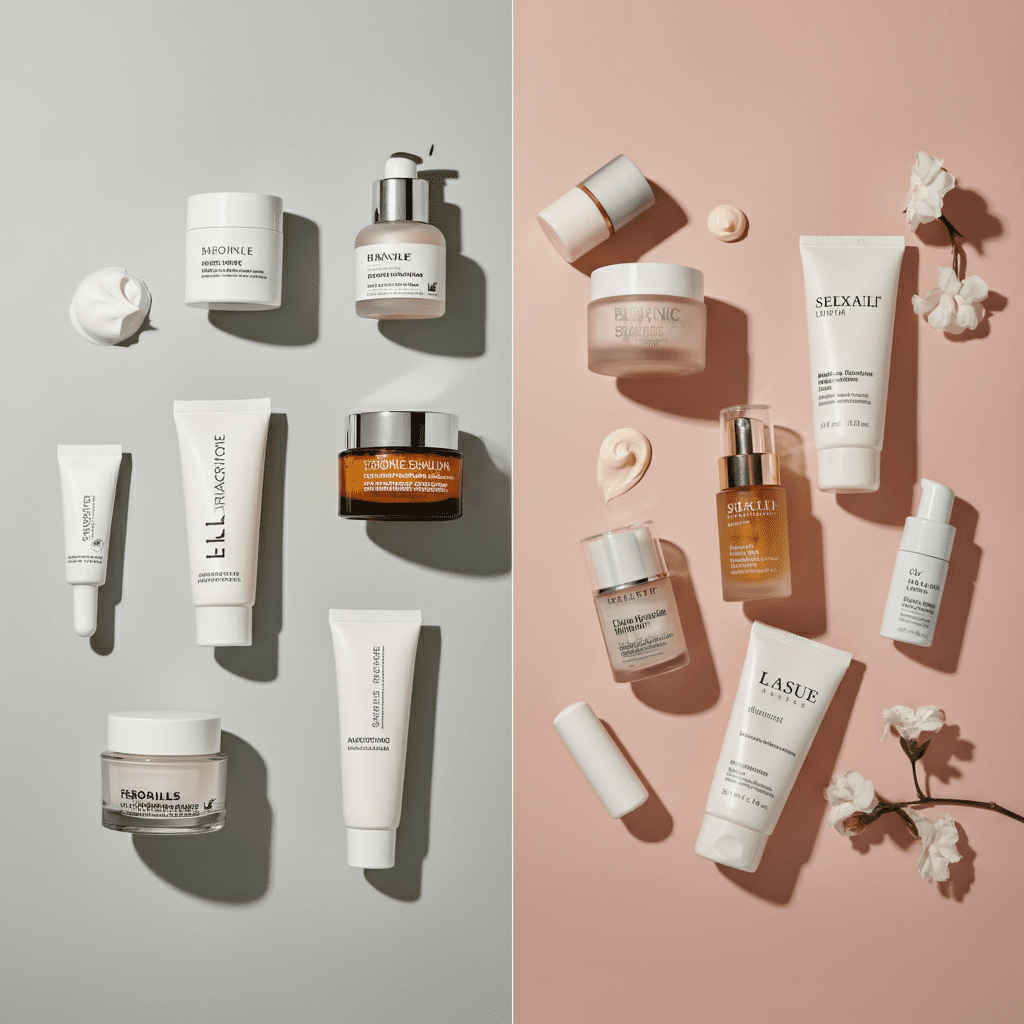
Luxury Skincare Must-Haves
Serums- Skinceuticals C E Ferulic brings together antioxidants to achieve an out of this world glow effect.
Moisturizers– La Mer crme de la cream is luxuriously expensive, and it moisturizes.
Masks -GlamGlow treatments provide anti-pollutant skin care with a high level of experience.
Irrespective of your choice, you have to be consistent. Select products, which are compatible with each other in order to have coherent routine.
How Hormones Affect Skin
The influence of hormonal changes on skin is tremendous. This is how to deal with various stages:
Teenage Skin
Problems: oily skin, pores clogging, breakouts.
Hints: Pay attention to purifying and light non-comedogenic cosmetics. Acne may be cleared by the use of salicylic acid.
Pregnancy
Hurdles: Darkening of the skin (pregnancy mask), or dryness, or sensitivity.
Tips: Go with fragrance-free comforting creams, containing niacinamide and skip retinoids.
Menopause
Problems: Dryness, saggy and elasticity.
Tips: Hydraulic serums that contain hyaluronic acid and also peptides, which promote collagen, are recommended. Moisturizers used at night ought to be heavier in attempt to fight dryness.
Whether you are at the point of having established a normal routine in your life, or on the contrary, your routine must change according to the skin needs as they change.
Common Skincare Mistakes to Avoid
Even the best intentions can cause setbacks. Here are pitfalls to watch out for:
- Skipping Sunscreen: UV damage is a leading cause of premature aging—daily SPF is non-negotiable.
- Over-Exfoliating: Too much scrubbing or acid use damages your skin barrier. Limit exfoliation to 1-2 times per week.
- Layering Too Many Actives: Combining everything (like retinol, AHAs, and BHAs) can actually cause irritation.
- Using Dirty Tools: From makeup brushes to towels, cleanliness prevents bacteria buildup.
- Not Patching New Products: Test patch every new item to avoid breakouts or allergic reactions.
A simple, consistent routine beats over-complicated regimens every time.
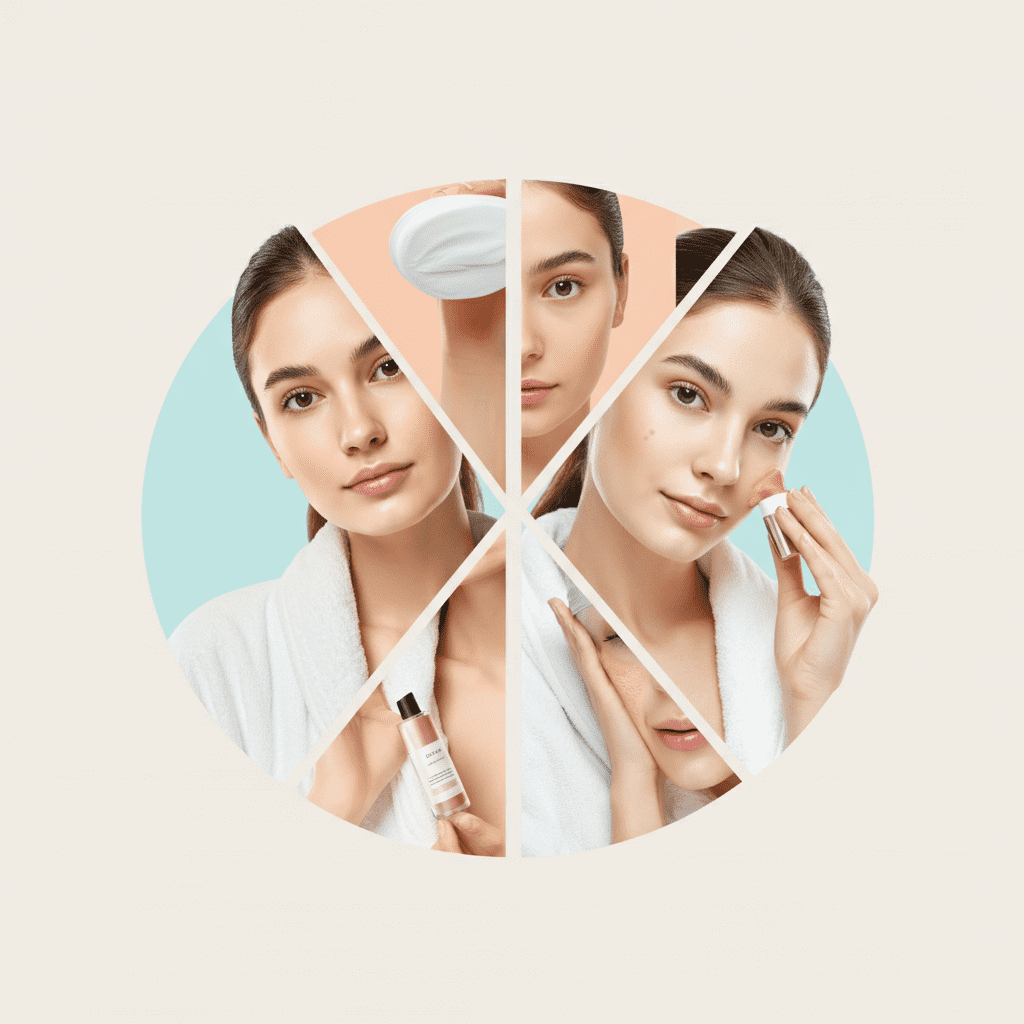
Tips for Building an Effective Skincare Routine
- Cleanse Gently – Start with a gentle cleanser that suits your skin type to remove dirt, oil, and sunscreen without stripping your skin’s natural moisture. Cleansing morning and night is essential for maintaining a clean, balanced complexion.
- Hydration is Key – Regardless of your skin type, moisturizing is crucial. Look for a moisturizer with ingredients like hyaluronic acid, glycerin, or ceramides to keep your skin hydrated and healthy.
- Don’t Skip Sunscreen – Sunscreen is a non-negotiable step in any skincare routine. Choose a broad-spectrum sunscreen with at least SPF 30 and apply it as the last step in your morning routine to protect your skin from harmful UV rays.
- Introduce Active Ingredients Gradually – Introducing actives like retinol, vitamin C, or exfoliating acids should be done slowly to avoid overwhelming your skin. Start with lower concentrations and use them sparingly to help your skin adapt.
- Listen to Your Skin – Your skin’s needs can change due to factors like weather, hormones, or stress. Pay attention to how your skin reacts to products and adjust your routine when necessary to maintain balance.
By focusing on these fundamental steps and adapting your routine to your skin’s unique needs, you can achieve a glowing and resilient complexion.
People Also Ask FAQs
Q1. Which skincare routine is perfect to start with?
One of the basic facial regimes contains cleanser, hyaluronic acid moisturizer, and sunscreen. Having moisturizer using nighttime.
Q2. How do I fix my skin barrier in a short time?
Avoid aggressive products, introduce moisturizer, which would be rich in ceramides, and try to keep it simple to recover.
Q3. What is the meaning of glow-boosting skincare?
It consists of such products as vitamin C and niacinamide that add radiance and brighten your skin.
Q4. How frequently do I have to use peptides?
It is possible to apply peptides on a daily basis, in particular at night, to strengthen and smooth skin with time.
Q5. Right now am I supposed to buy luxury skincare to see difference?
It is not so. Economical brands include the most effective powers of refreshment, shielding and restoration.
Wrapping Up
Looking after your skin in 2025 does not have to be complex and expensive. Healthy and radiant skin can be accomplished with the help of balanced routine and high quality ingredients such as hyaluronic acid, niacinamide and peptides. Irrespective of whether you prefer economic bargains or expensive splurges, consistency and how you know more about your skin type can make most of the difference.
Final Thoughts
However, regardless of where you might be in your skincare journey, it all comes down to listening to your skin and adjusting to it. The trends may adapt and change, but basic ingredients of skincare cleanse, moisturize and protect will always be the same. Healthy skin can also be used interchangeably with referring to a healthy lifestyle, in the sense that healthy skin is as important as the issue of what you are putting on your skin. Drink plenty of water, consume food with lots of nutrients and also rest. Just be patient and take a little care because your skin will give you thanks years after.
Begin getting the skin of your dreams now. Make your life easy and radiate like no one would!
M. Saim Akhtar
Certified Health Content Specialist at HealthBoostMax. INFS-qualified nutrition researcher with 5+ years of evidence-based health writing. Focus areas: health wellness Information, preventive medicine, nutritional biochemistry, and fitness science.

Men’s & Women’s Health
Period Pain Relief with Exercises – Effective Routines(2025)
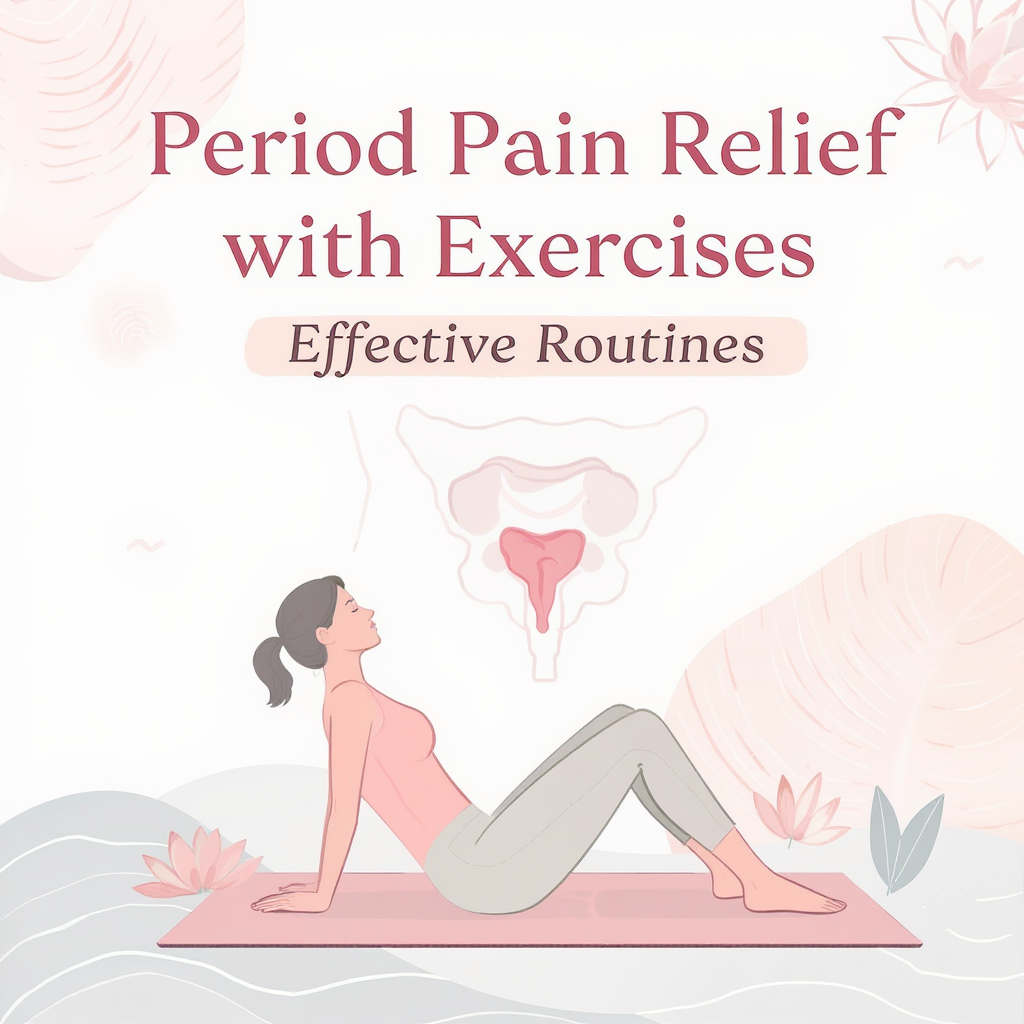
Table of Contents
Period Pain may be an uphill challenge. To most people, the dysmenorrhea cramps, headache and fatigue may interfere with daily activities. And yet, you might not realize that carefully selected exercises could be the solution to the rescue. The integration of menstrual-cycle particular regimes will alleviate the discomfort, balance prostaglandins, and improve general health.
They include hypopressive core sequences, as well as incorporation of acupressure points such as SP6 and CV4 to solve the problems in addition to treating period pain as a symptom and the cause. The most interesting bit? They are applicable in the individualization of such practice in terms of specific needs and conditions like endometriosis. Need to know more? Continue to read through a detailed introduction on exercises which are to be followed especially to treat period pain.

Period Pain Relief on the First Day
The first day of your period can often bring intense discomfort and cramps, but incorporating a few simple relaxation techniques can help ease the pain and promote calmness. One effective method is applying a warm compress or heating pad to your lower abdomen for 15-20 minutes at a time. The warmth helps relax the uterine muscles and improves blood flow, reducing cramps.
Additionally, focus on regulating your breathing by practicing deep belly breathing. Sit or lie down in a comfortable position, place your hands on your abdomen, and take slow, deep breaths while feeling your belly rise and fall. This technique supports relaxation and reduces stress, which can often exacerbate discomfort.
Another quick way to relax involves gentle yoga stretches like the child’s pose or cat-cow stretch. These poses help alleviate pelvic tension and improve circulation. Combine these methods with proper hydration and sipping soothing herbal teas, such as chamomile or ginger, for added relief and comfort.
Certain foods can provide relief and nourishment during your period, helping to ease discomfort and support your body. Foods rich in magnesium, like dark leafy greens, nuts, and seeds, can help relax muscles and reduce cramps. Omega-3 fatty acids found in salmon, mackerel, and flaxseeds have anti-inflammatory properties that may lessen menstrual pain. Additionally, incorporating iron-rich foods such as beans, lentils, and lean meats can help replenish the iron lost during menstruation, reducing the risk of fatigue and weakness. Don’t forget to include plenty of fruits like bananas and oranges, which can supply essential vitamins and aid in maintaining hydration. Opting for warm, comforting meals and snacks can also make your period feel a little easier to manage.
Prostaglandin-Regulating Movements
Prostaglandins play a central role in menstrual cramps. These hormone-like substances cause the uterus to contract, often resulting in pain and inflammation. Exercises targeting the transverse abdominis and pelvic region can modulate prostaglandin production and improve blood flow.
Hypopressive Core Sequences
Hypopressive exercises focus on activating the transverse abdominis, a deep core muscle vital for pelvic floor integrity. These movements not only enhance core strength but also improve oxygen flow to the uterus, reducing cramping.
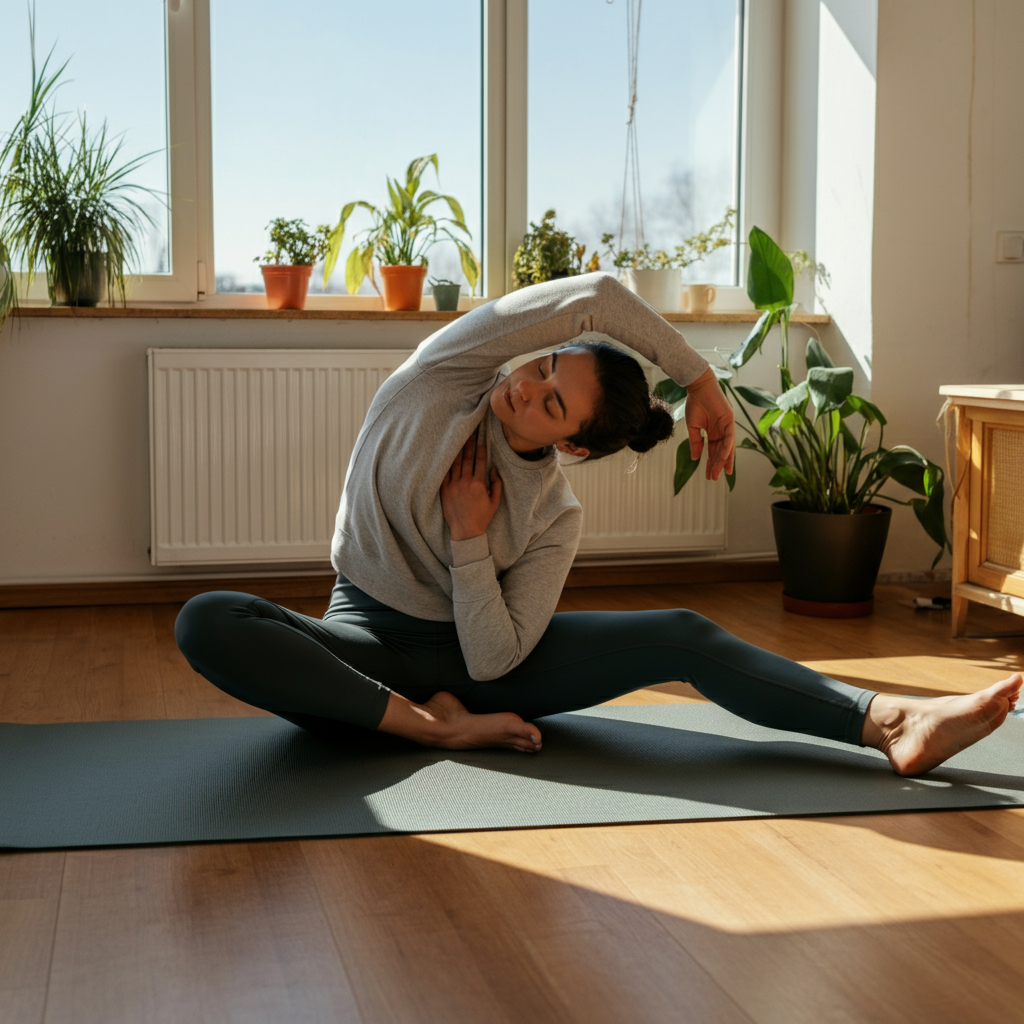
How to Perform Hypopressive Exercises:
- Positioning: Start by standing or lying on your back. Maintain a neutral spine.
- Breathing Technique: Take a deep diaphragmatic breath, then exhale fully while contracting your abdomen.
- Engagement: Engage your pelvic floor by gently lifting it inward. Hold for 10-15 seconds and release.
Performing 2-3 sets of these sequences during or before your period can lessen overall discomfort.
SP6 and CV4 Acupressure Integration
Combining acupressure techniques with thermal imaging has shown promising results in managing period pain. Key focus areas include the Sanyinjiao (SP6) and Conception Vessel 4 (CV4) points.
SP6 Acupressure Point
The SP6 point, located above the ankle, is closely linked to easing menstrual cramps. Research suggests applying gentle pressure can relax the muscles and balance prostaglandins.
How to Use SP6 for Pain Relief:
- Use your thumb to apply consistent pressure for 5-10 minutes on both ankles. A warm compress can enhance relaxation.
CV4 Acupressure Point
The CV4 point, located near the lower abdomen, directly influences uterine health. Thermal imaging studies support its effectiveness in increasing blood flow and easing uterine contractions.
How to Use CV4 for Comfort:
- Lie on your back and apply steady pressure to the CV4 point using the tips of your fingers. Pair this with deep breathing for amplified benefits.
Endometriosis and Contraindications for Spinal Flexion
If you suffer from endometriosis, exercise practices should be approached with care. It’s important to avoid spinal flexion movements, like forward bends, as they may exacerbate the displacement of endometrial tissue.
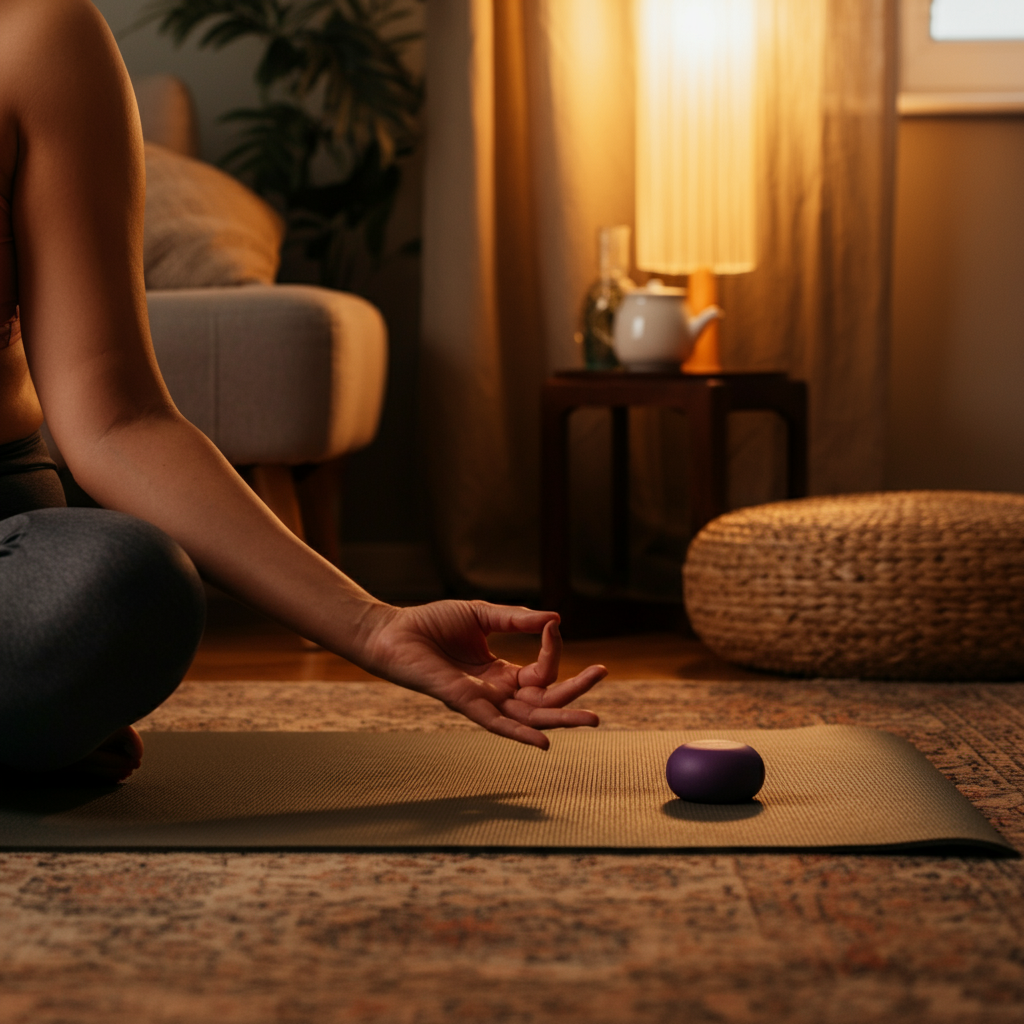
Safe Alternatives for Endometriosis Patients:
- Gentle stretching routines, such as Cat-Cow stretches and reclining twists, can relieve tension without triggering discomfort.
- Yoga poses focused on pelvic opening, like the Bound Angle pose, are also effective.
Always consult a healthcare provider before starting any exercise routine specific to endometriosis.
Myometrial Blood Flow and Doppler Ultrasound Observations
Proper blood flow to the uterine muscles, or myometrium, is essential for reducing cramps. Doppler ultrasound studies reveal that certain physical activities can promote circulation in this area.
Exercises for Enhanced Myometrial Blood Flow
- Pelvic Tilts: Lie on your back with knees bent. Slowly tilt your pelvis upward and hold for a few seconds before releasing.
- Walking: Low-intensity walking encourages blood flow to the pelvic region, reducing inflammation and stiffness.
These exercises also contribute to leukotriene pathway modulation, further reducing inflammation tied to menstrual pain.
Additional Tips for Supporting Myometrial Health
Beyond exercise, adopting certain lifestyle habits can further enhance myometrial blood flow and overall uterine health.
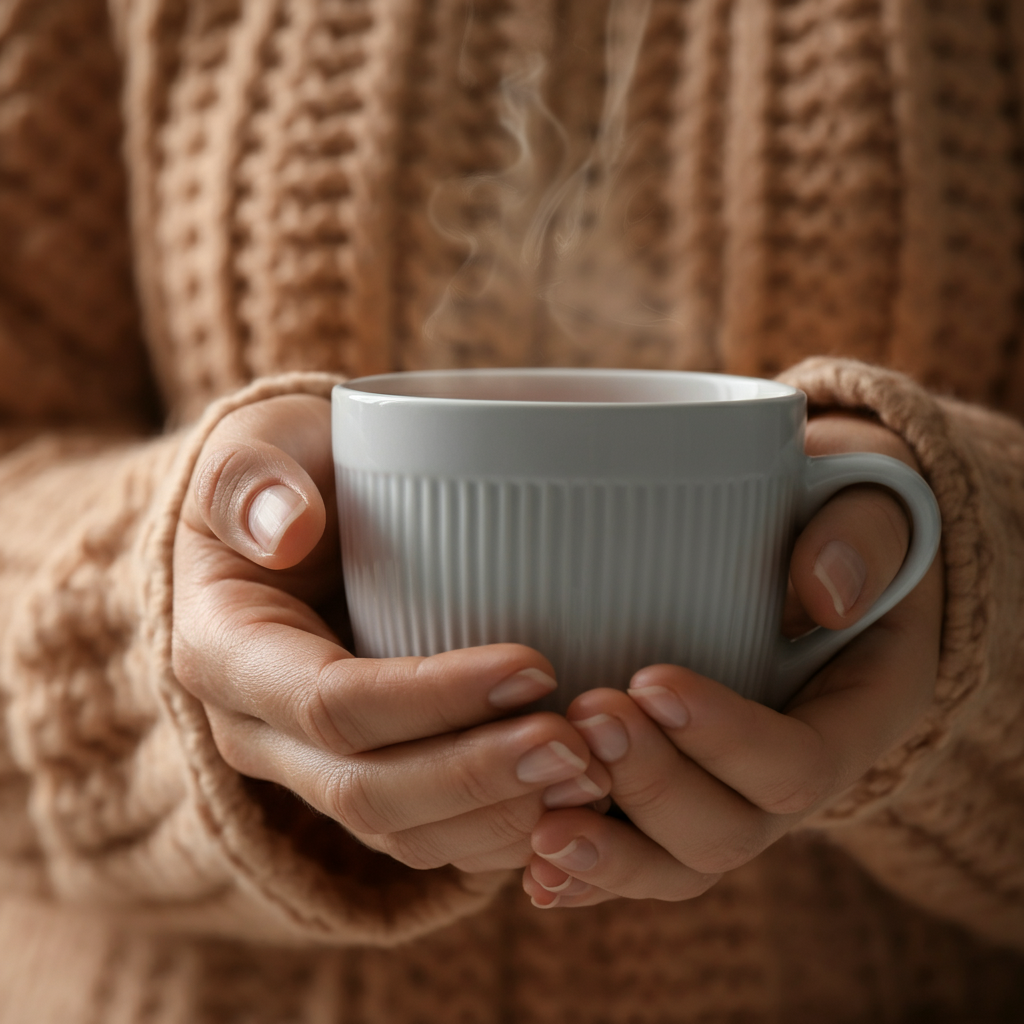
- Hydration: Staying well-hydrated improves circulation, ensuring that oxygen and nutrients are effectively delivered to tissues, including the uterus.
- Nutrition: Incorporate foods rich in antioxidants, such as berries, leafy greens, and nuts, to combat oxidative stress and support cellular health. Foods high in omega-3 fatty acids, like salmon and flaxseed, can also reduce inflammation.
- Stress Management: Chronic stress can lead to hormonal imbalances that may negatively impact uterine health. Practices like yoga, meditation, or deep breathing exercises can help regulate stress levels and support hormonal harmony.
Incorporating these lifestyle changes alongside targeted physical activity can create a more comprehensive approach to promoting uterine well-being and reducing discomfort.
Medical Treatment
- Regular Checkups: Scheduling routine gynecological examinations is essential for maintaining uterine health. These checkups can help in the early detection of conditions such as fibroids, endometriosis, or infections, ensuring timely medical intervention.
- Hydration: Staying well-hydrated supports overall bodily functions, including the flow of nutrients and oxygen to the reproductive organs, which can aid in tissue health and healing processes.
- Supplements: For individuals with nutrient deficiencies, supplements like magnesium, vitamin D, and iron—as recommended by a healthcare provider—can enhance uterine health and alleviate symptoms related to those deficiencies.
- Communication with Healthcare Providers: Openly discussing any persistent symptoms like abnormal bleeding, pelvic pain, or irregular cycles ensures that potential issues are addressed promptly and effectively.
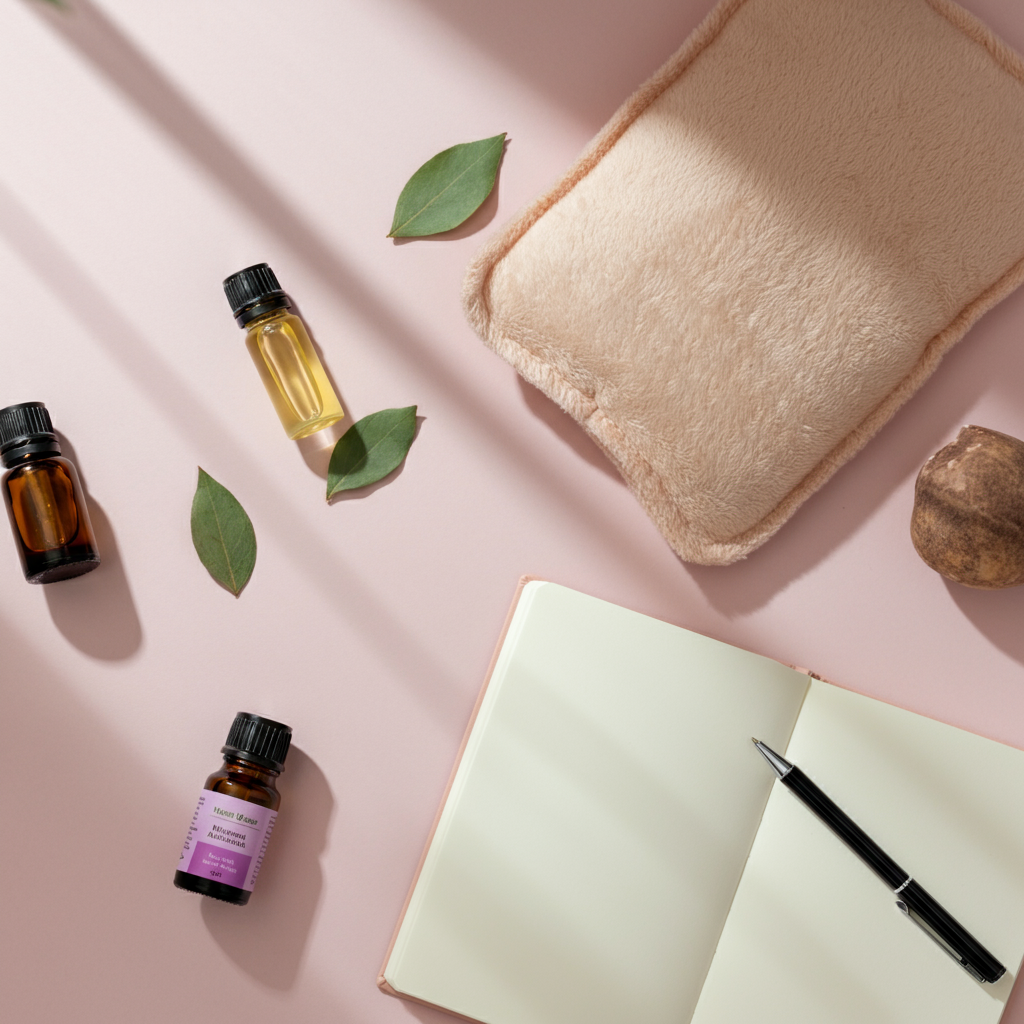
Taking proactive steps, coupled with professional medical guidance, can play a significant role in fostering long-term uterine health and overall reproductive well-being.
People Also Ask
1. What exercises help with period pain?
Hypopressive core exercises, acupressure techniques, and low-impact activities like walking can alleviate cramps by promoting blood flow and relaxing the pelvic region.
2. Can exercise reduce prostaglandins?
Yes, certain movements that improve uterine circulation and engage the core can modulate prostaglandin levels, reducing inflammation and period pain.
3. Is yoga safe for endometriosis?
Yes, but avoid spinal flexion poses. Gentle stretches and pelvic-opening movements, like the Bound Angle pose, are safer alternatives for endometriosis patients.
4. How does acupressure work for menstrual pain?
Acupressure focuses on points like SP6 and CV4 to regulate muscle contractions, improve circulation, and balance prostaglandins, providing relief from cramps.
5. What is the role of myometrial blood flow in period pain?
Adequate blood flow to the uterine muscles helps reduce cramps and inflammation. Exercises that enhance circulation can significantly alleviate discomfort.
6. Can hypopressive exercises help with dysmenorrhea?
Yes, hypopressive movements activate the transverse abdominis and improve oxygen flow to the uterus, minimizing the severity of period pain.
Conclusion
Finding relief from period pain doesn’t have to rely solely on over-the-counter remedies. Activities like hypopressive core sequences, targeted acupressure, and safe stretches offer effective, natural ways to manage discomfort. Understanding your body’s unique needs—such as addressing contraindications for conditions like endometriosis—ensures that your routine is both effective and safe.
Take the first step toward pain-free periods by incorporating these research-backed exercises into your menstrual care. Your body will thank you for it!
Start your period pain relief routine today for a more comfortable tomorrow.
M. Saim Akhtar
Certified Health Content Specialist at HealthBoostMax. INFS-qualified nutrition researcher with 5+ years of evidence-based health writing. Focus areas: health wellness Information, preventive medicine, nutritional biochemistry, and fitness science.
Fitness & Exercise
How to do Kegel Exercises for Boosting Testosterone level | What 7 Studies Reveal

Main Key Points
Boosting testosterone levels naturally is a topic of growing interest among men seeking to optimize their health and performance. While strength training and diet are widely acknowledged methods, Kegel exercises—the targeted training of pelvic floor muscles—present a lesser-known yet scientifically backed approach to enhancing hormonal balance. Though traditionally linked to improved erection quality, emerging research suggests that Kegels may also increase testosterone production by strengthening the connection between pelvic floor muscles and free testosterone.
This article dives deep into the science, shares a step-by-step Kegel protocol, debunks myths around their usage, and explores complementary biohacks to maximize their impact. By the time you finish reading, you’ll gain unique insights into incorporating Kegels into your testosterone-boosting regimen.
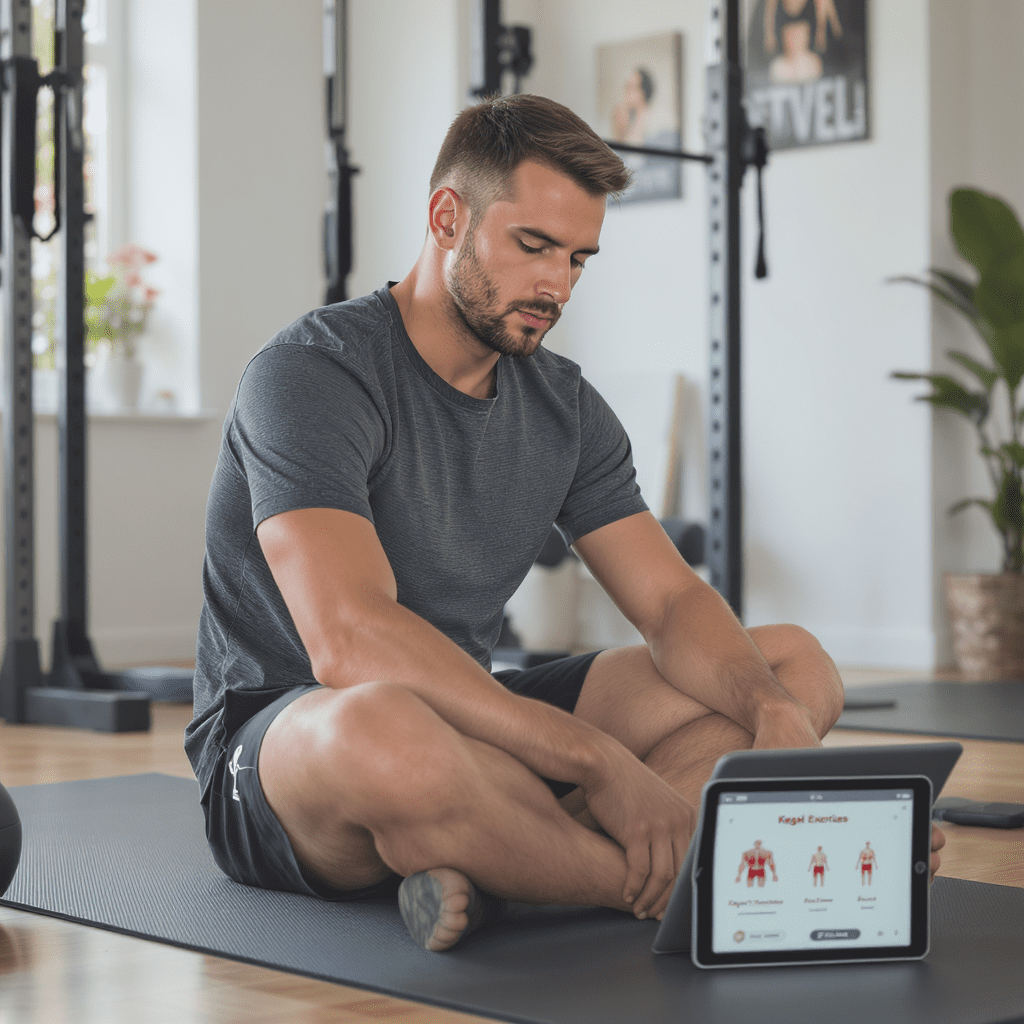
Kegels & Boosting Testosterone: What 7 Studies Reveal
Studies exploring the relationship between pelvic floor muscle training and testosterone reveal promising results. These insights bridge the gap between targeted exercise and endocrine health.
1. Pelvic Floor Muscle Strength and Androgen Production
A study found that stronger pelvic floor muscles positively affect Leydig cell function in the testes. These cells are responsible for producing testosterone. The underlying mechanism lies in increased blood flow and neuromuscular activation in the pelvic region.
2. Kegels and Luteinizing Hormone (LH)
Research suggests that pulsed Kegel contractions may indirectly up-regulate luteinizing hormone (LH) secretion, a key driver of testosterone synthesis. LH activates the Leydig cells, leading to more efficient androgen production.
3. Reverse Kegels and Cortisol Reduction
Reverse Kegels, which involve controlled relaxation of pelvic muscles, are linked to lowering cortisol, the stress hormone that inhibits testosterone. Studies highlight a direct correlation between stress mitigation and rising testosterone levels.
4. Blood Circulation and Hormonal Health
Enhanced circulation from consistent Kegel exercises improves oxygen delivery and metabolite clearance in the testes, a factor crucial for maintaining high testosterone levels.
5. Prostate Health
Pelvic floor strengthening improves prostate health, which is vital for androgen balance. Studies suggest that a healthy prostate enables consistent testosterone synthesis and reduces DHT-related complications.
6. Comparisons with Compound Movements
While deadlifts and squats are often considered the gold standard for testosterone responses, Kegels specifically target the pelvic floor. For men with less time for full-body workouts, this focused intervention offers a viable alternative.
7. Synergy with Biohacking Strategies
Combining Kegels with other natural supplements and techniques, such as Tribulus terrestris, shows enhanced results in boosting LH and testosterone levels.
By exploring these studies, we see that Kegel exercises contribute far more than just improved pelvic floor function. They’re a key player in natural hormone optimization.
The 5-Second Testosterone Kegel Protocol
To make the most of Kegel exercises for testosterone, follow this simple yet highly effective routine.
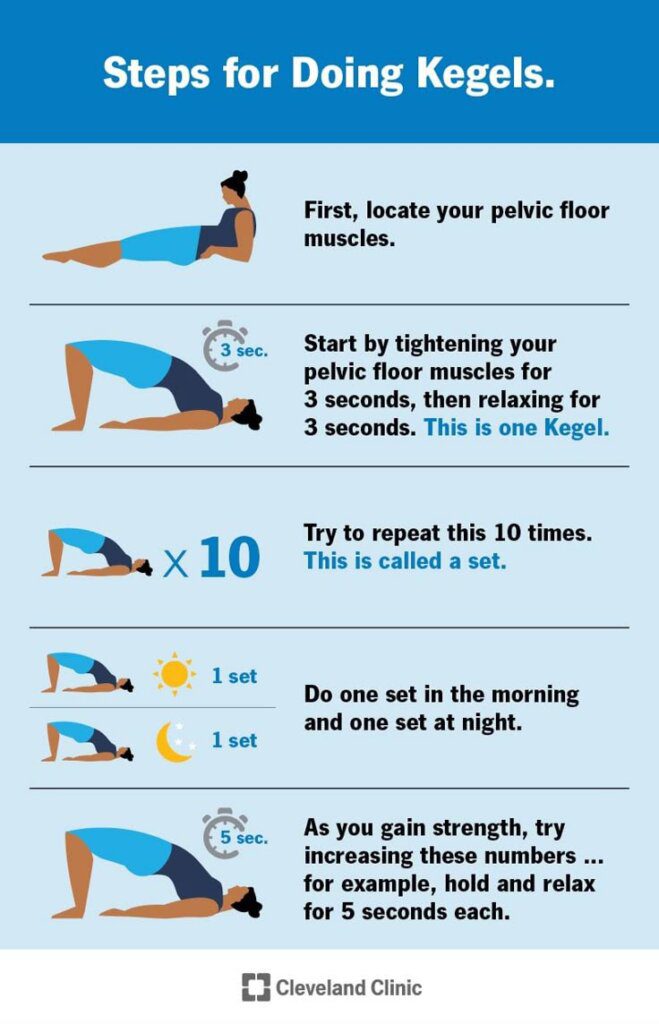
Step-by-Step Routine
- Find the Right Muscles
Identify your pelvic floor muscles by stopping urine flow midstream or tightening the muscles that prevent flatulence. These are the muscles you’ll engage during Kegels.
- The Basic 5-Second Contraction
-
- Contract the pelvic floor muscles tightly for 5 seconds.
- Release and relax for 5 seconds.
- Perform 10-15 reps for one set.
- Pulsed Contractions for LH Secretion
-
- Perform rapid contractions (tighten and relax in 1-second intervals).
- Continue for 30 seconds, then pause for a 10-second rest.
- Repeat 3 cycles.
- Reverse Kegels
-
- Focus on gentle relaxation of the pelvic floor. Imagine pushing out slightly as if urinating or bearing down gently.
- Hold the relaxation for 5 seconds and repeat 10 times.
- Create a Schedule
-
- Start with two sessions per day (morning and evening). Gradually increase intensity as your muscles strengthen.
This balanced protocol addresses both contraction and relaxation, ensuring testosterone-boosting benefits while avoiding overtraining
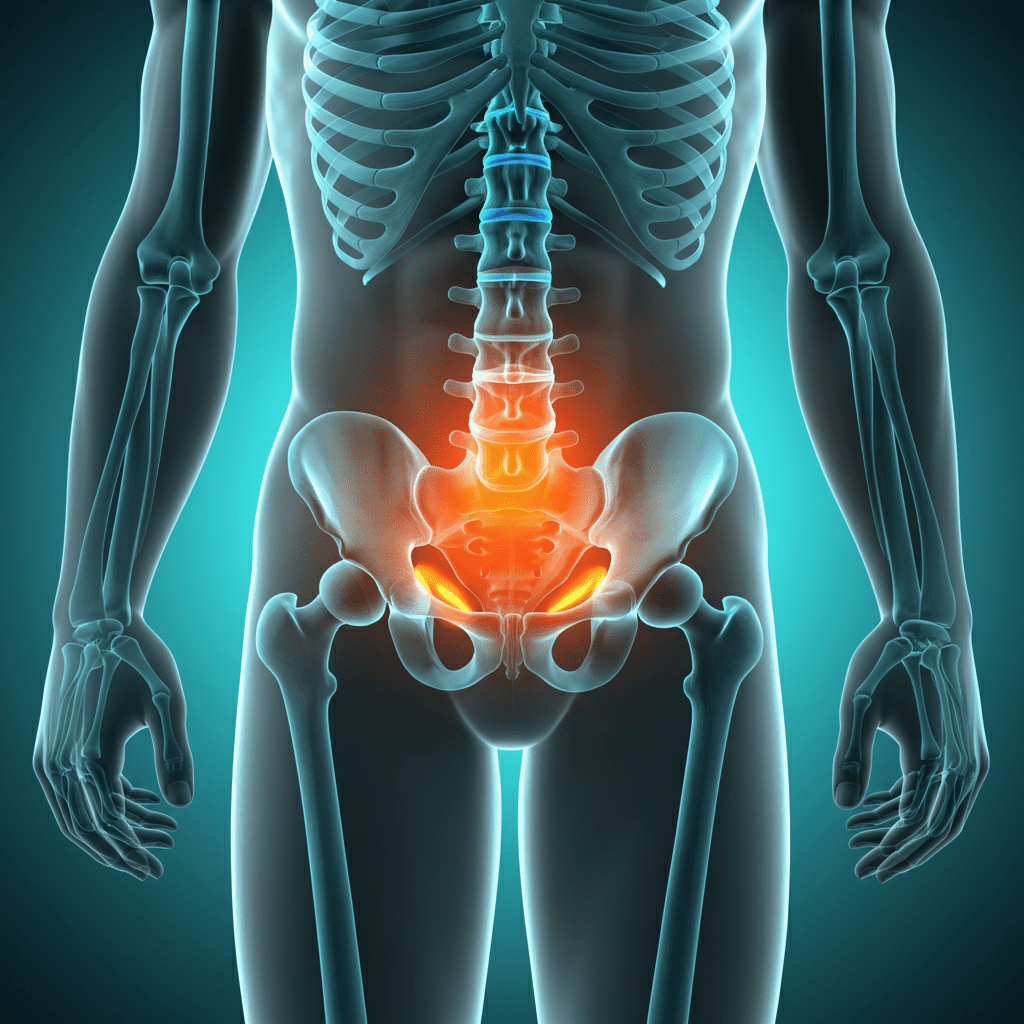
Why Most Men Do Kegels Wrong for Hormones
Kegels are often misunderstood or improperly executed, which can hinder their benefits—especially hormonal ones. Here are common mistakes to avoid:
- Overtraining
Excessive Kegels can cause chronic pelvic tension, leading to decreased blood flow and even testosterone suppression. Stick to the recommended routine.
- Neglecting Reverse Kegels
Exclusively focusing on contractions without incorporating relaxation exercises risks imbalances, which may increase cortisol levels.
- Relying on Them Alone
While effective, Kegels may not be sufficient if not paired with a healthy lifestyle, including resistance training, proper nutrition, and stress management.
- Improper Form
Engaging surrounding muscles (like glutes or abs) instead of isolating the pelvic floor minimizes the effectiveness of Kegels.
Avoiding these errors ensures you’ll get the full hormonal benefits.
Biohacking Combos for Maximum Results
Maximize your testosterone-boosting gains by combining Kegels with these powerful biohacks:
1. Cold Exposure
Post-workout cold showers help regulate cortisol and support a testosterone-friendly environment.
2. Zinc Supplementation
Zinc aids in maintaining healthy testosterone levels and enhances the effects of pelvic floor strengthening on androgen production.
3. Tribulus Terrestris
This herbal supplement complements Kegels by stimulating LH and boosting testosterone.
4. Anterior Pelvic Tilt Correction
Improving pelvic alignment through stretches and posture correction prevents tension that could hinder Kegel effectiveness.
Together, these techniques create a holistic approach to hormonal optimization.
Alternatives for Erectile vs. Hormonal Goals
Not all men pursue Kegels for the same reasons. If your focus is erectile health or general hormonal benefits, consider these distinctions:

For Erectile Health
-
- Focus on regular Kegels, with a slight emphasis on reverse Kegels for relaxation.
- Combine with cardiovascular exercises to improve circulation.
For Hormonal Balance
-
- Pair Kegels with resistance training, like deadlifts. Compound lifts elevate testosterone by engaging large muscle groups.
Understanding your goals allows you to tailor your exercise and bio-hacking strategies effectively.
Additional Tips for Success
- Consistency is Key: Like any other exercise, consistency is crucial to see tangible results. Aim to perform your Kegels and other supporting exercises daily or on a regular schedule.
- Mind-Muscle Connection: Focus on proper form and fully engaging the correct muscles during each repetition. Avoid compensating with surrounding muscles like the glutes or thighs.
- Track Your Progress: Keep a journal of your exercise routines and any noticeable improvements in strength, hormonal balance, or overall health. Tracking progress can help you stay motivated and refine your approach if needed.
- Combine with a Healthy Lifestyle: Pair your exercise regimen with a balanced diet, stress management techniques, and adequate sleep to maximize results.
By integrating these tips into your routine, you can enhance not only your physical performance but also your overall well-being.
People also ask
Do kegels boost men testosterone?
It is true, Kegels can possibly boost testosterone given the argument that they increase the strength of pelvic muscles and blood circulation.
What are the Reverse Kegels and what do they do to help cortisol?
The reverse Kegels consists of relaxing pelvic muscles, which can reduce the cortisol level and, therefore, contribute to the enhancement of the testosterone.
What is the time frame of the results of Kegel exercises?
With the regular practice, noticeable effects on force and hormonal equilibrium may be observed within 4-6 weeks.
Which is more effective, Kegels or deadlifts when it comes to testosterone?
These kinds of exercises are different and have different advantages, as Kegels train the pelvic floor and deadlifts train the large muscles to enhance a systemic hormone boost.
Does overtraining Kegel reduce testosterone?
Yes, over training may have an adverse effect causing pelvic tension and cortisol to rise which affects the level of testosterone.
Conclusion
Kegels are a surprisingly versatile tool for boosting testosterone levels naturally. By strengthening pelvic floor muscles, improving blood flow, and optimizing hormonal pathways, they offer benefits far beyond what’s traditionally assumed. Incorporating the 5-Second Testosterone Kegel Protocol, avoiding overtraining, and combining exercises with bio-hacking techniques can amplify results. Whether you’re focused on hormone optimization or erectile health, this practical yet science-backed solution deserves a place in your regimen.
Consistency is key when it comes to seeing the full benefits of the protocol. Start by integrating the routine into your daily schedule, ensuring you dedicate a few minutes each day to practicing the exercises. Over time, this commitment can lead to noticeable improvements in energy levels, physical performance, and overall vitality. Additionally, pairing the protocol with a balanced diet rich in essential nutrients such as zinc, magnesium, and vitamin D can further support hormonal health. Staying hydrated and prioritizing quality sleep are also crucial factors that can complement the effects of the exercises, creating a holistic approach to boosting testosterone naturally.
Start incorporating these strategies into your routine and take charge of your hormonal health naturally!
M. Saim Akhtar
Certified Health Content Specialist at HealthBoostMax. INFS-qualified nutrition researcher with 5+ years of evidence-based health writing. Focus areas: health wellness Information, preventive medicine, nutritional biochemistry, and fitness science.
Fitness & Exercise
How to Lose Weight Fast in 7 Days Without Losing Muscle

Key Points
If you don’t think it’s possible to lose weight quickly and sustainably, reconsider. There is no reason to starve oneself on extraordinary diets and work out at the gym to lose weight fast. By using science-based strategies such as metabolic priming, NEAT boosting, and carb cycling, you will experience the results within one week. You will not only lose weight, but you will also retain muscle and improve your health at the same time. A 7-day rapid fat loss plan will help you concentrate on healthy habits that are easily sustainable, the foods that suppress your hunger, and the efficient workout you can perform at home. We will also gather popular pitfalls that should be avoided to make a complete revolution in your attitude toward fat burning, without spoiling all the rest.
You will learn how to best use your nutrition and practices, as well as overcome some stumbling blocks, such as water retention and metabolic damage. This plan covers your concerns about muscle retention and optimizing thyroid health. Use this guideline to initiate weight loss and boost your confidence.
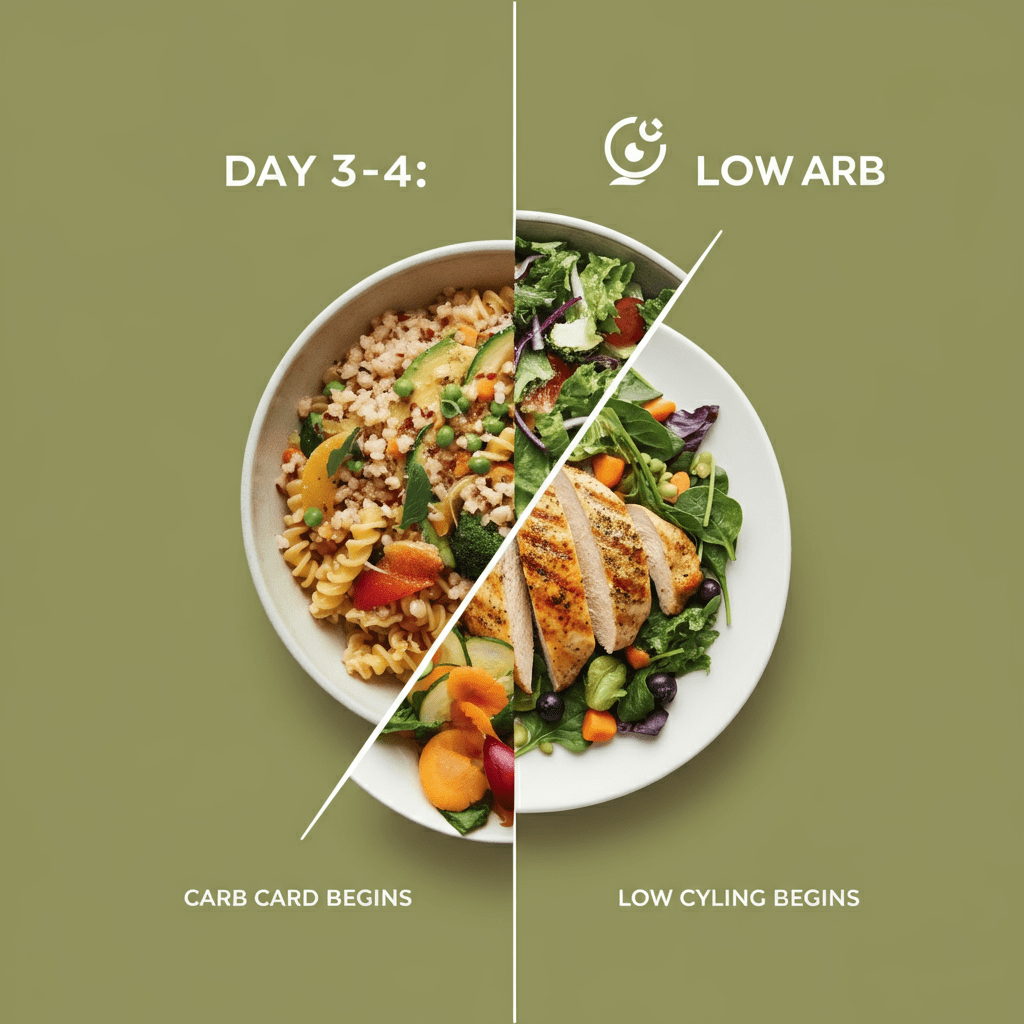
7-Day Plan for Quick Results
Day 1-2: Metabolic Priming
- Focus: Kickstart your metabolism.
- Portion Hack: Divide your plate—50% vegetables, 25% lean protein, and 25% healthy carbs (quinoa, sweet potato, or brown rice).
- Hunger-Curbing Foods: Start your day with protein-rich breakfasts like eggs or Greek yogurt to stabilize blood sugar levels.
- Activity Tip: Maximize NEAT (Non-Exercise Activity Thermogenesis) by walking 10,000 steps daily and incorporating small movements like stretching or pacing while on calls.
Day 3-4: Carb Cycling Begins
- Focus: Enhance fat burn while maintaining energy.
- Strategy:
- Alternate high-carb and low-carb days. For example, eat starchy carbs post-workout on high-carb days, and focus on veggies and protein on low-carb days.
- Workout:
- Try low-impact HIIT workouts (e.g., brisk walking with short sprints) to boost calorie burn without stressing joints.
Day 5-6: Boost Protein and Hydration
- Focus: Minimize water retention and support muscle retention.
- Hacks:
- Sip lemon water throughout the day to reduce bloating.
- Increase protein consumption with lean chicken, turkey, and plant-based options like tofu or lentils.
- Activity:
- Introduce bodyweight strength exercises like planks, push-ups, or squats for 15-20 minutes.
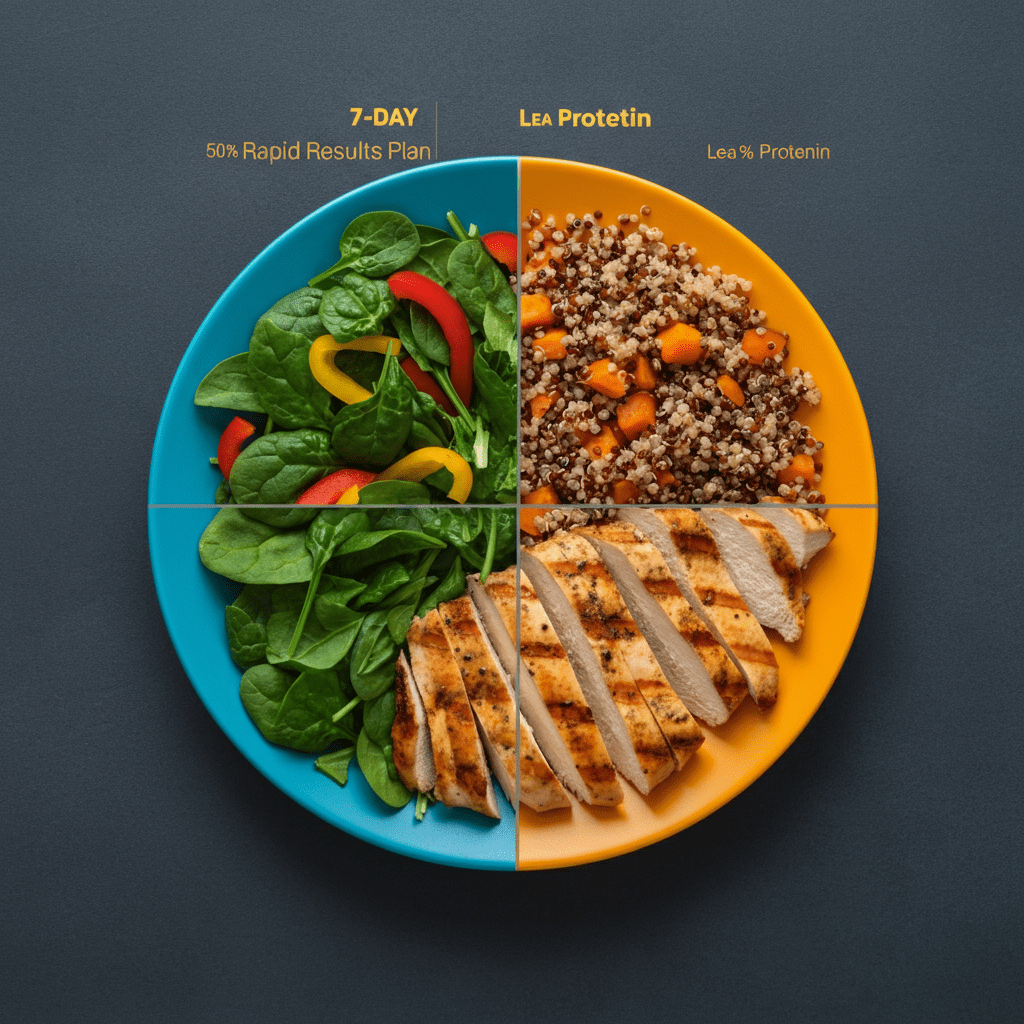
Day 7: Recovery and Reflection
- Focus: Allow your body to recover and consolidate progress.
- Tips:
- Make sleep optimization a priority; to control hunger hormones, strive for 7-9 hours.
- Use this day to reassess portion sizes and maintain an active recovery, like a long walk or yoga session.
By structuring your week this way, you can stay energized and consistently shed fat without feeling deprived or overtired.
5 Fat Loss Hacks Doctors Use
1. Prioritize Insulin Sensitivity
Eating balanced meals with fiber, protein, and healthy fats can improve how your body handles blood sugar. This reduces fat storage, especially around the midsection.
2. Understand the Fat-Adaptation Timeline
If you’re transitioning to low-carb or keto eating, remember that your body needs 3-7 days to adapt to burning fat for fuel. Stay patient during this metabolic shift.
3. Sleep Optimization
Poor sleep disrupts hormones like leptin and ghrelin, which control hunger and fat storage. Aim to maintain consistent bedtimes and avoid screens before sleeping.
4. Manage Thyroid Health
Include thyroid-friendly foods like seaweed (iodine-rich) and Brazil nuts (a great source of selenium) to support healthy thyroid function while losing weight.
5. Practice Metabolic Recovery
If you’ve followed restrictive diets before, add a “re-feed” meal once a week. Gradually increase calorie intake with nutrient-dense foods to repair metabolic damage.
These doctor-approved techniques can make a significant difference in achieving sustainable fat loss.
6. Incorporate Strength Training
Building lean muscle through strength training can boost your resting metabolic rate, helping you burn more calories even when at rest. Try to work out your main muscle groups two or three times a week.


Why You’re Not Losing Weight (Fix These)
1. Overlooking Hidden Water Retention
High sodium intake, stress, or premenstrual bloating can mask fat loss on the scale. Combat this with potassium-rich foods like bananas or spinach.
2. Ignoring Exercise Variety
Working out the same way over and over again might cause plateaus. Alternate between yoga, swimming, or other exercises that work different muscle areas, or include low-impact HIIT.
3. Overtraining Without Rest
Too much exercise without adequate recovery can cause cortisol spikes, leading to fat storage. Always balance active days with rest or low-intensity activities.
4. Skipping Nutrition Adjustments
Failing to adjust portions or macros as your weight changes may slow progress. Reassess your needs weekly and make incremental updates.
5. Focusing on Rapid Fat Loss Without Sustainability
Short-term fixes without planning for maintenance often result in weight regain. Focus on building long-term habits alongside rapid results. Address these common barriers to push through stagnation and achieve your goals faster.
Before-After Metrics
Tracking your progress is key to understanding what works for your body. Here’s how to do it right:
- Body Fat Percentage:
- Use calipers or smart scales weekly to measure fat loss vs. muscle retention.
- Water Weight:
- Monitor fluctuations using a scale at the same time daily (morning is best). Look for patterns rather than focusing on day-to-day changes.
- Muscle Retention:
- Gauge strength improvement by tracking reps and load over time for bodyweight or weighted exercises.
- Measurements:
- Take waist, hip, and thigh measurements, as inches lost may happen before the scale shows results.
These objective markers give you a clearer picture of how your efforts are paying off.
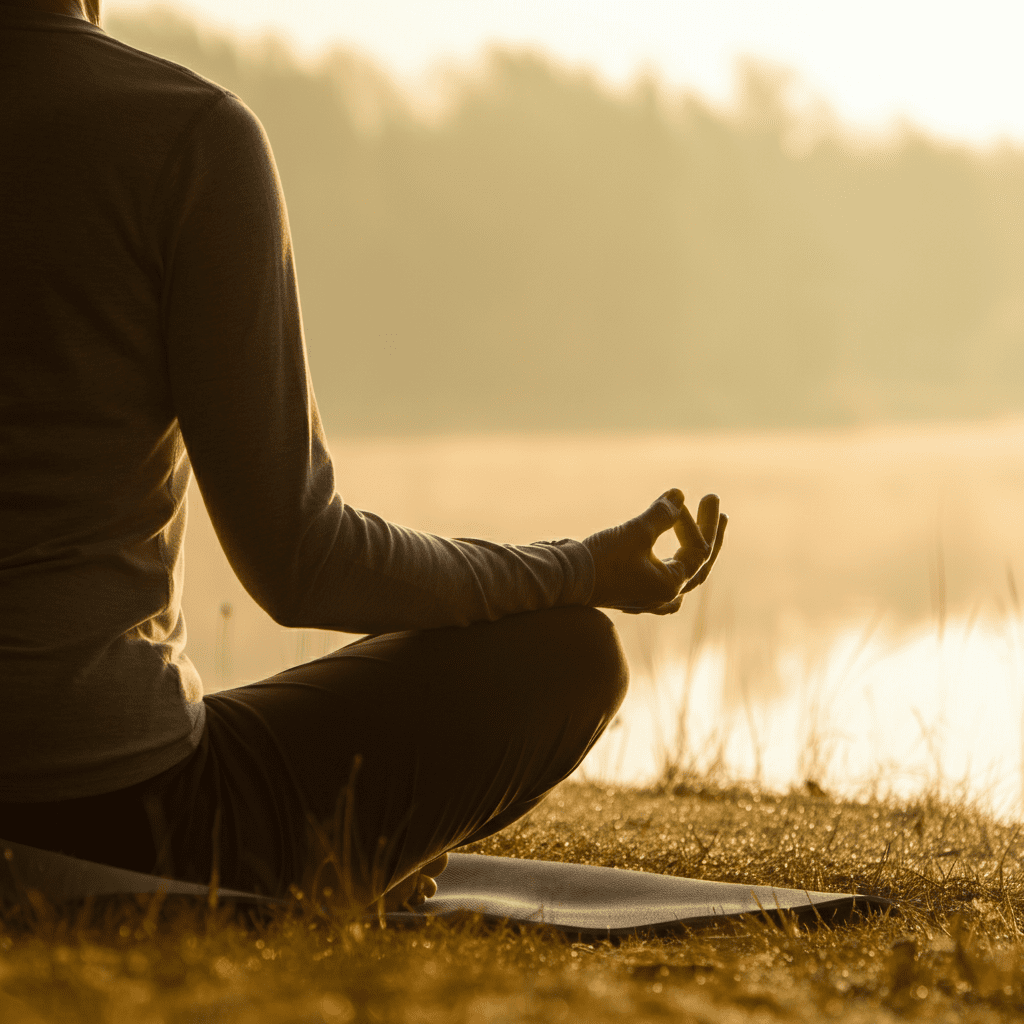
Mistakes to Avoid for Sustainable Weight Lose
Avoid these pitfalls to stay on track:
- Over-Restriction:
- Extremely low-calorie diets slow your metabolism and make fat loss harder. Stick to a moderate caloric deficit.
- Neglecting Thyroid Health:
- Low iodine or selenium intake can impair thyroid function, hindering fat burn.
- Skipping Recovery:
- Overworking your body leads to exhaustion and reduces workout effectiveness. Factor in rest days and prioritize quality sleep.
- Relying on Fad Diets:
- Avoid extreme plans like juice cleanses or unbalanced meal plans. They rarely provide the nutrients needed for sustainable health.
You may prevent setbacks and achieve steady growth by being aware of and avoiding these errors.
Tips for Optimizing Your Health Journey
To maximize your health and fitness efforts, consider implementing these strategies:
- Prioritize Balanced Nutrition:
- Focus on consuming a variety of whole foods, including lean proteins, healthy fats, and complex carbohydrates. Incorporate colorful fruits and vegetables for essential vitamins and minerals.
- Stay Consistent with Exercise:
- To keep motivated, choose things you enjoy doing, like yoga, running, or strength training. The finest benefits can be obtained by combining resistance and cardio training.
- Hydrate Adequately:
- Drinking enough water is crucial for overall health. Proper hydration supports digestion, energy levels, and joint health.
- Set Realistic Goals:
- Establish specific, measurable, and achievable objectives. Breaking down larger goals into smaller milestones can help maintain motivation and track progress.
- Listen to Your Body:
- Pay attention to signs of fatigue or stress, and adjust your routine as needed. Recovery is just as important as effort to ensure long-term success.
By adopting these tips and staying consistent, you’ll be better equipped to achieve a healthier and more sustainable lifestyle.
FAQs (PPA)
What are probable fitness targets to newcomers?
Conditioning Example: A realistic fitness goal during the early stages of the exercise routine could be; exercising 3 times per week, walking a certain amount of steps per day, or getting more flexible. Take baby steps and monitor the progress in the long run.
What can I do to keep me motivated to have a healthy lifestyle?
Maintaining motivation can involve setting achievable goals, perhaps celebrating small victories, finding a workout partner, or keeping a notebook to document your progress.
Why is it important to pay attention to your body when exercising? Being receptive to your body allows you to avoid overtraining, lower the chances of injury and encourage the healing process, which is a key element in the long-term consistency of fitness habits.
What is the advantage of setting up small milestones in a longer goal?
Setting a whole goal in mini objectives breaks the big goal and makes it look smaller, easier to focus, and it gives the feeling of accomplishment at every milestone.
What are the effects of recovery on the general progress of fitness?
Recovery enables muscles to heal, decreases fatigue, and makes the body accustomed to exercise to have greater performance and sustainability.
How can one measure fitness? Monitoring fitness improvement can be done with the help of apps, by keeping a fitness diary, or by evaluating the performance at regular periods of time on a measurement scale such as weight, endurance or strength.
Conclusion
With a combination of science and sound strategy, it is actually possible to change your body within seven days. Fat loss can be achieved by paying attention to metabolic priming, controlled portion meals, carb cycling, and appropriate recovery to shed off stubborn fat and maintain muscle mass. Keeping yourself on track through specific measurements keeps you on your course, and the prevention of such pitfalls ensures success in the long run.
This is the moment to pledge wiser commitments and an environmentally sound strategy to shedding fat. Become fitter, slimmer and more confident within a week! Sign up your 7-day plan and reinvent what is possible of your health.
M. Saim Akhtar
Certified Health Content Specialist at HealthBoostMax. INFS-qualified nutrition researcher with 5+ years of evidence-based health writing. Focus areas: health wellness Information, preventive medicine, nutritional biochemistry, and fitness science.
Men’s & Women’s Health
Best Natural Skincare Routine for Sensitive Skin

Table of Contents
Sensitive skin requires special attention, and the choice of the skincare products which would not provoke irritations may not be easy. Luckily, that is where natural skincare comes to the rescue! Using items right out of your kitchen cupboard, you can have yourself a routine that is smooth, efficient, and absolutely devoid of any harmful chemicals. Honey, a wonderful skin cleanser; Oatmeal, a wondrous soothing exfoliant, and Aloe Vera, a moisturizer that will never block your pores. Depending on what you are fighting, be it acne, premature signs of aging or rosacea, this dermatologist-recommended regime can be adjusted to your skin requirements.
Questioning how you can stabilize your skin’s pH, or wondering whether tap water has an impact on your skin? Find simple natural ways to get good and glowing skin. This guide will take you through a no-nonsense 5 step routine, provide a DIY vitamin C serum recipe, and the benefits of hypoallergenic moisturization and non-comedogenic oils.
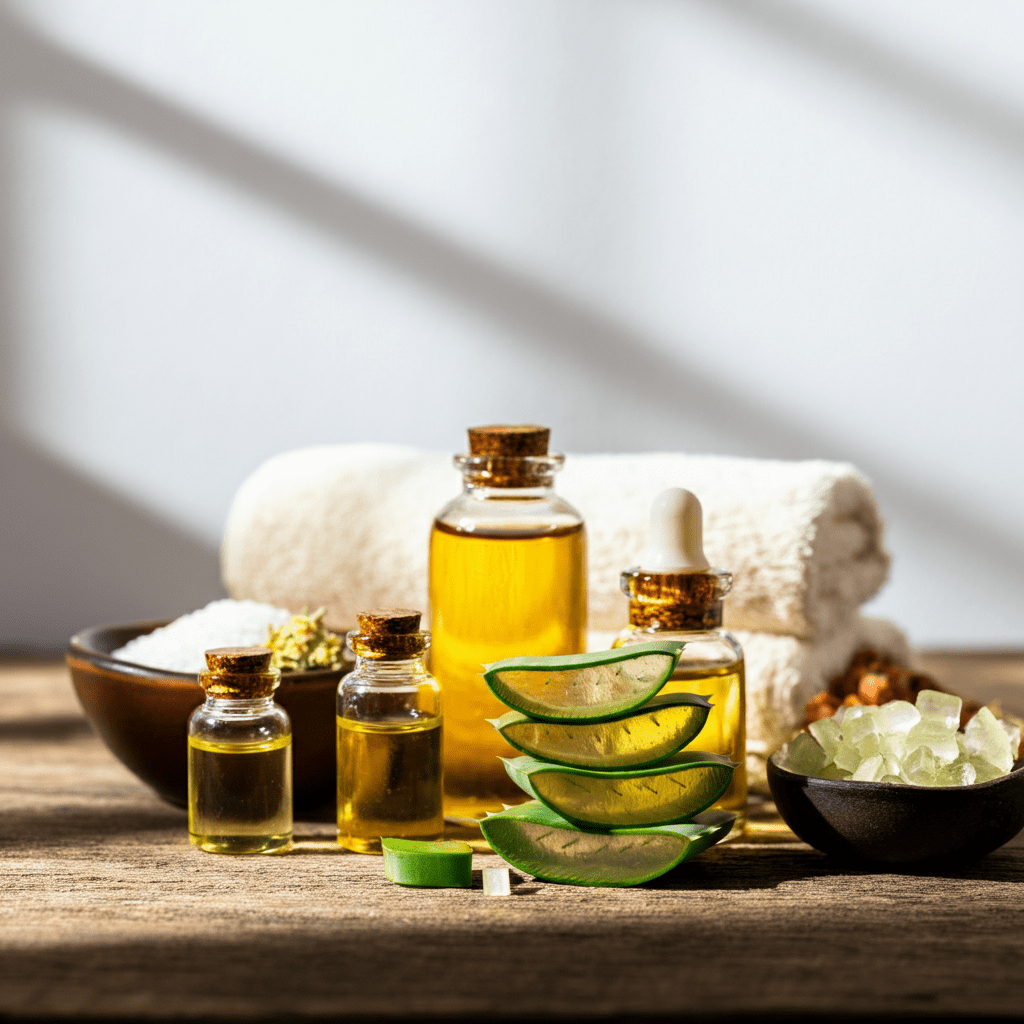
A Dermatologist-Approved 5-Step Routine
Transform your skincare routine using simple, natural ingredients with this effective 5-step guide designed for sensitive skin.
1. Cleanse with Honey
Honey is a natural humectant, drawing moisture to your skin. Its antimicrobial properties make it ideal for sensitive, acne-prone skin.
How to Use:
- Use 1 teaspoon of raw, organic honey.
- Gently massage it onto damp skin in circular motions for 1-2 minutes.
- Rinse off with lukewarm water.
Honey keeps your skin hydrated while cleansing, without stripping natural oils.
2. Exfoliate with Oatmeal
Oatmeal is a soothing, gentle exfoliant that removes dead skin cells and calms irritation.
How to Use:
- Blend 2 tablespoons of oats into a fine powder.
- Mix with a little water or milk until it forms a paste.
- Gently massage onto your skin and rinse with cool water.
This natural exfoliant is especially helpful for those with rosacea or redness.
3. Tone with a DIY pH-Balancing Solution
Using a toner helps maintain your skin’s pH balance. Apple cider vinegar is an excellent natural option.
How to Use:
- Dilute 1 part apple cider vinegar with 2 parts distilled water.
- Apply gently with a cotton pad.
Be cautious with the concentration to avoid irritation; always test patch first.
4. Moisturize skincare with Aloe Vera
Aloe vera gel is perfect for locking in hydration without clogging pores. It’s non-comedogenic and hypoallergenic, making it ideal for sensitive skin.
How to Use:
- Scoop out pure aloe vera gel from the plant or use store-bought, organic options without additives.
- Apply a thin layer after toning.
Aloe also soothes inflammation, making it great for conditions like rosacea and acne.
5. Sun Protection with Mineral Sunscreen
All-natural, mineral-based sunscreens containing zinc oxide or titanium dioxide are less likely to irritate sensitive skin while providing effective sun protection.
How to Use:
- Apply generously as the final step in your morning routine.
Skipping sunscreen can worsen redness and sensitivity, so this step is a must!

Customizing the Routine
Acne-Prone Skin
- Add 2 drops of tea tree oil to your moisturizer for its antibacterial properties.
- Use non-comedogenic oils like jojoba or grapeseed for hydration.
Aging Skin
- Include a DIY vitamin C serum (see the recipe below) to brighten your complexion and reduce fine lines.
Rosacea
- Avoid harsh exfoliants and opt for hydrating oatmeal masks instead.
- Stick to soothing ingredients like cucumber slices or chamomile tea compresses.
DIY Vitamin C Serum Recipe
Vitamin C serums can brighten skin, fade dark spots, and boost collagen production. Here’s how to make your own at home.
Ingredients:
- 1 teaspoon L-ascorbic acid powder
- 1 tablespoon distilled water
- 1 teaspoon aloe vera gel
- 5 drops vitamin E oil (optional for added nourishment)
Instructions:
- Dissolve the L-ascorbic acid in distilled water.
- Mix in aloe vera gel and vitamin E oil.
- Store in a dark glass bottle and use within a week to maintain freshness.
Apply this serum at night before your moisturizer for glowing and healthy skin.
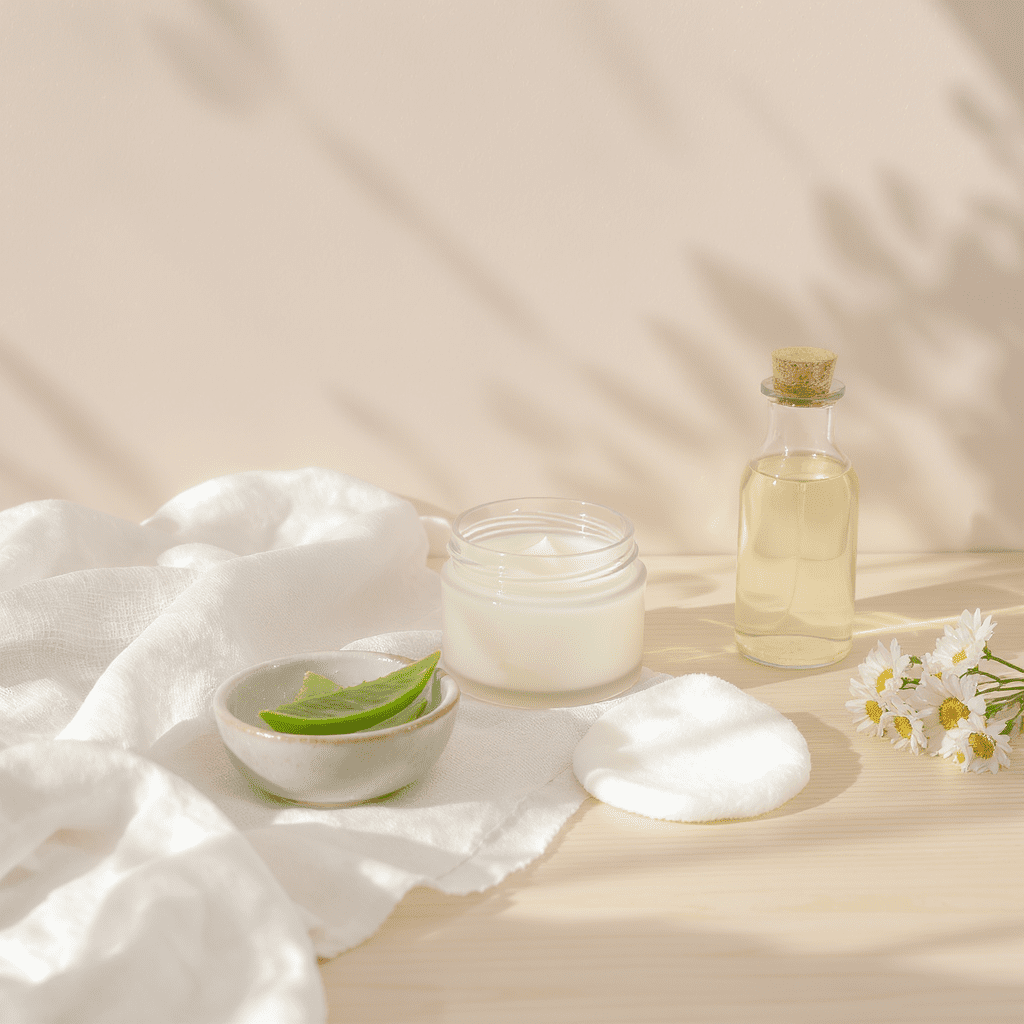
pH-Balancing Tips and Tap Water Dangers
Why pH Matters: Your skin’s natural pH is slightly acidic, around 5.5. When products or water throw this balance off, it can lead to irritation, dryness, and breakouts.
Tap Water Tip: The pH of tap water typically ranges between 6.5 and 8.5, which can disrupt your skin’s barrier. To mitigate this, use filtered or distilled water when washing your face or mixing DIY products.
Other Tips:
- Follow your cleansing with a pH-balancing toner, like diluted apple cider vinegar.
- Avoid harsh soaps that are too alkaline.
The Benefits of Hypoallergenic Natural Moisturizers and Non-Comedogenic Oils
Hypoallergenic Natural Moisturizers: These minimize the risk of an allergic reaction. Look for products with ingredients like glycerin, aloe vera, or shea butter.
Non-Comedogenic Oils: Oils like argan, jojoba, and hempseed won’t clog your pores, making them perfect for sensitive or acne-prone skin.
Fungal Acne Solutions
Fungal acne, often mistaken for bacterial acne, thrives in oil-heavy environments. Here’s how to manage it naturally:
- Cleanse Properly: Use honey or tea tree oil-based cleansers to target the fungus.
- Avoid Problematic Oils: Stick to non-comedogenic options like squalane or mineral oil.
- Use Anti-Fungal Products: Nizoral shampoo (used as a mask) can help when applied topically.
Tips for Glowing Skin
Achieving a radiant complexion doesn’t have to be complicated. Incorporate these tips into your routine for glowing skin:

- Stay Hydrated: Drinking plenty of water keeps your skin plump and healthy.
- Exfoliate Regularly: Use a gentle exfoliator once or twice a week to remove dead skin cells.
- Eat a Balanced Diet: Include fruits and vegetables rich in antioxidants like Vitamin C and E.
- Get Enough Sleep: Rest allows your skin to repair itself and maintain a natural glow.
- Moisturize Daily: Choose a moisturizer suited to your skin type to lock in hydration.
- Cleanse Properly: Use a mild cleanser twice a day to remove dirt, oil, and makeup without stripping your skin of its natural oils.
- Avoid Touching Your Face: Keep your hands off your face to minimize the transfer of bacteria and prevent breakouts.
- Manage Stress: High stress levels can lead to skin issues like acne and inflammation, so practice mindfulness or relaxation techniques.
- Exercise Regularly: Physical activity increases blood flow, delivering oxygen and nutrients to your skin, which helps maintain its health and vitality.
- Protect Your Skin from the Sun: Always use sunscreen with at least SPF 30, even on cloudy days, to shield your skin from harmful UV rays that can cause premature aging and increase the risk of skin cancer.
- Get Sufficient Sleep: Aim for 7-9 hours of quality sleep each night as this is when your body repairs and regenerates skin cells, promoting a fresh and rejuvenated appearance.
Step 1: Gentle, yet Effective Cleaning
Skincare always begins with the cleansing. Reach for a gentle, sulfate-free cleanser and wash away impurities (hello, dirt, oil, and makeup!), without destroying your skin barrier by stealing its natural moisture. Sensitive skin people should also deliberate on using a cleanser that contains calming ingredients, such as chamomile or aloe vera. Washing your face twice a day in the morning and at night will minimize the clogging of the pores, and it makes your skin ready to receive the rest of the products in your regime.
Step 2: Wise Exfoliation
Dead skin cells removal and cell turn are essential to the process of exfoliation, but one should be careful not to overdo it. Opt with either AHAs based or BHAs-based chemical exfoliants to approach an exfoliation lighter and overall more, even with less irritation. To stay on the right track, exfoliate your skin not more than two or three times a week, especially if you have dry and sensitive skin.
Conclusion
The green beauty routine is the breakthrough of sensitive skin. You can calm inflammation and tune into balance with the help of such dermatologist-approved ingredients as honey, oatmeal, and aloe vera in their simplest form. Skin conditions that you may want to address, such as acne, rosacea, and aging, won t be a problem with this personalizable regimen.
To make the best out of your skin care regime, make sure you patch-test whenever you introduce a new product to your daily skincare, so as to test it out. Care should be taken not to scrub hard or over-exfoliate, since this will only make sensitive skin more irritated. Also, drinking water, maintaining a balanced diet and shielding your skin against the sun with SPF is important in taking proper care of your skin complexion. It is worth remembering that long-lasting outcomes are achieved through consistency. Focus on what works on your individual skin and consider the time of pampering it.
Give these tips a try and experience the magic of natural skincare! Share your results or favorite DIY recipes in the comments below—we’d love to hear from you. Your path to calm, radiant skin starts today!
M. Saim Akhtar
Certified Health Content Specialist at HealthBoostMax. INFS-qualified nutrition researcher with 5+ years of evidence-based health writing. Focus areas: health wellness Information, preventive medicine, nutritional biochemistry, and fitness science.
Men’s & Women’s Health
Benefits of Mental Health with Regular Exercise (2025)

Table of Contents
Workout is much more than that, which helps physical health find a way around. It is also a remedy to mental well-being. Be it a runner high or a collective yoga session, frequent exercise can change your brain in some new and amazing methods. Whether it is to diminish anxiety or stimulate mood, the science is apparent, movement makes the difference. Studies indicate that when a neurogenesis exercise threshold (150 minutes a week) is reached, it is a critical point, as it can have a powerful influence on such important neurotransmitters as GABA and glutamate, making them more balanced between stress and promotion of calmness. It also maximizes your cortisol curve, helps burnout, and makes you more resilient. More exciting is the exercise euphoria people have after such a physical activity, which is shown by the millions who have mental health advantages starting on the run.
You may ask me how it works. And what are the best ways to maximize this? Here, we will examine the protective mechanisms relating to exercise and its contribution to mental health: both the biochemical processes and social processes can be seen as contributing to mental health. These are also presented in a practical way, which can help a person view exercise as a less uncomfortable task and a more enjoyable way of benefit.
How 150 Minutes/Week Alters GABA and Glutamate Levels
Regular exercise of at least 150 minutes per week—Neurogenesis is an important factor in brain chemistry. Regular exercise of at least 150 minutes per week, which is the accepted threshold of neurogenesis exercise level, is critical. Physical activity directly influences GABA (gamma-aminobutyric acid) and glutamate, which are two of the most important neurotransmitters.
Balancing Brain Chemistry
GABA is the relaxing neurotransmitter of the brain that lowers stress levels and other anxieties, while glutamate helps improve the thinking ability and memory recalling power. Exercise increases the production of GABA, and this leads to relaxation and lessening of the signs of anxiety. At the same time, the levels of glutamate in the body increase, providing better concentration and brain efficiency in general. According to studies, regular aerobic exercises such as running, swimming or cycling have been reported to raise these neurotransmitters to an overwhelmingly high degree-efficacious, especially on the part of the participants, whereby they feel both relaxed and mentally alert.
Factoring in Time and Intensity
The dose-response relationship is key. Moderate yet consistent effort—30 minutes of activity spread across five days—helps you achieve the desired outcomes. Overdoing intensity, however, can lead to counterproductive stress spikes that increase cortisol levels instead of calming them.
Pro Tip:
Focus on activities you enjoy to make it sustainable. For example, brisk walking paired with stretching routines can gradually help your body reach the ideal biochemical state.
Trauma-Informed Movement
Mental and emotional trauma-informed movement is gaining significance in the inclusion of mental and emotional healing to physical exercise. These are ways to respectfully consider the historical traumas, with the movement as a healing source.
Understanding the Stress-Cortisol Connection
Trauma survivors have a hyperactive cortisol curve, which is the cycle of stress hormone that would impede relaxation. Exercises such as yoga or tai chi are gentle and control the levels of cortisol, helping the mind and body relieve stress stored up. This will be achieved by keeping the participants mindful of their exercises, which would strengthen their security and control of their body and reactions.
- Advantages of Mindful Movement
- Lowers posttraumatic hypervigilance
- Makes you introspective and centered
- Contributes to restoring the confidence in body
Small Steps Lead to Big Wins
And there is no optimal strategy. There are days of sitting meditation and days of a creative dance session. The trick is to listen to what your inner comfort zone is, and gradually increase that scope.
The Biochemistry of Runner’s High
The fabled runner’s high isn’t a myth—it’s a measurable phenomenon linked to endorphins and the endocannabinoid system (ECS).
What Happens in the Brain?
In the process of long cardio exercise, your body can produce endorphins, which are natural pain relievers. At the same time, ECS is involved, which forms compounds that resemble cannabis. All of them, in tandem, introduce the feelings of happiness, contentedness, and even short-lived euphoria.
This exercise only suits runners?
Absolutely not. There is no need to go marathoning to find this chemical sweet spot. These benefits are also available when activities such as biking, aerobics or swimming are engaged in moderate levels over a period of 30-45 minutes. New people can achieve their first highs within a few weeks of regular practice.
Biological Rewards
Aside from mood, the runner’s high improves focus and promotes an anti-inflammatory response throughout the brain and body, providing holistic mental clarity.
Strength in Numbers: Understanding Social Connection Metrics
Our mental health thrives not only on neurotransmitters but also on the relationships we nurture. Exercising in groups adds meaningful layers of connection that go beyond fitness goals.
Being Part of a Community
Studies show that collective physical activities like group classes or team sports improve not just mood, but also social connection metrics—a key determinant in mental health. Being part of a supportive group reduces loneliness, while amplifying accountability.
Key Advantages of Group Training
- Support and Motivation: Encouragement keeps you moving on days when motivation falters.
- Shared Goals: Achievements feel bigger when celebrated together.
- Enhanced Dopamine Release: Social bonding in group settings enhances the brain’s reward system, adding to feelings of accomplishment.
Solo Exercise vs. Group Dynamics
While solo exercise offers mindfulness and independence, combining these activities with occasional group sessions ensures a dynamic balance of personal growth and community support.
Tips for Choosing the Right Exercise Approach
The choice of individual exercising, group exercise, or a mixture of these two options depends on your objective, your will and the lifestyle you have. The following are some tips to guide you in making the best choice:
- Assess Your Goals: If your aim is to improve focus, discipline, or mental clarity, solo workouts may be ideal. For those looking to build social connections or stay motivated, group activities could be a better fit.
- Experiment with Both: Sometimes, the best way to find what works is to try both options. Alternate between individual and group exercises to discover what you enjoy most.
- Consider Your Schedule: Time constraints and daily routines can influence your choice. Solo workouts provide flexibility, while group settings often require scheduling but offer added accountability.
- Listen to Your Body and Mind: Your energy levels and mental state can vary day to day. On some days, you might crave solitude, while on others, you’ll thrive in the company of others.
Ultimately, the key is finding a balance that keeps you engaged, motivated, and progressing toward your fitness goals.
FAQs
- What is the threshold of neurogenesis exercises?
The exercise threshold of neurogenesis is the standard of 150 minutes of moderate physical activity per week, which causes the growth of brain cells and regulation of neurotransmitters. - What is the effect of exercise with regard to reducing cortisol?
The endorphins are released during an exercise triggering the relaxation and normalization of the cortisol curve, and the nervous system interprets the message to down regulate the level of stress hormones. - What is defined as trauma-informed exercise?
Trauma-informed movement includes mindful movement, such as yoga or tai chi, which are thought to help emotionally healing trauma during stress reduction. - How do I get a runner high, without running?
Yes, such other cardios as biking or swimming may also initiate ECS activation and endorphin release, which can be compared with the feeling of euphoria. - What are the benefits of group exercise to mental intelligence?
Group exercise forms a sense of belonging, eliminates loneliness and promotes the release of dopamine by working moments. - Is solo exercise also good to mental health?
Definitely. Individual exercises also promote an enhanced introspective experience with greater levels of mood and focus, as well as neurotransmitter-related relaxation.
Conclusion
The connection between exercise and its positive effect on human mental health is not merely anecdotal, but something verifiable to be scientifically correct. An incorporation of at least 150 minutes of physical time into daily duties can increase the concentration of GABA and glutamate in the body, and also lead to normalization of stress via cortisol optimization and euphoria via endorphins. Moreover, there are personalized methods, such as the trauma-informed movement or the lively group environment, so that everyone can take advantage of the exercise, damping it down to individual preferences or experiences.
Start small. Go out walking, do yoga or participate in a sports club. The positive effects are multiplied fast, and it makes you not only a better thinker, but also a much better life. It is high time to take care of your mental health. Take a step-remember, each step will make you strong.
M. Saim Akhtar
Certified Health Content Specialist at HealthBoostMax. INFS-qualified nutrition researcher with 5+ years of evidence-based health writing. Focus areas: health wellness Information, preventive medicine, nutritional biochemistry, and fitness science.
Healthy Lifestyle & Nutrition
How to Build a Daily Self-Care Routine | Ultimate Guide in 2025
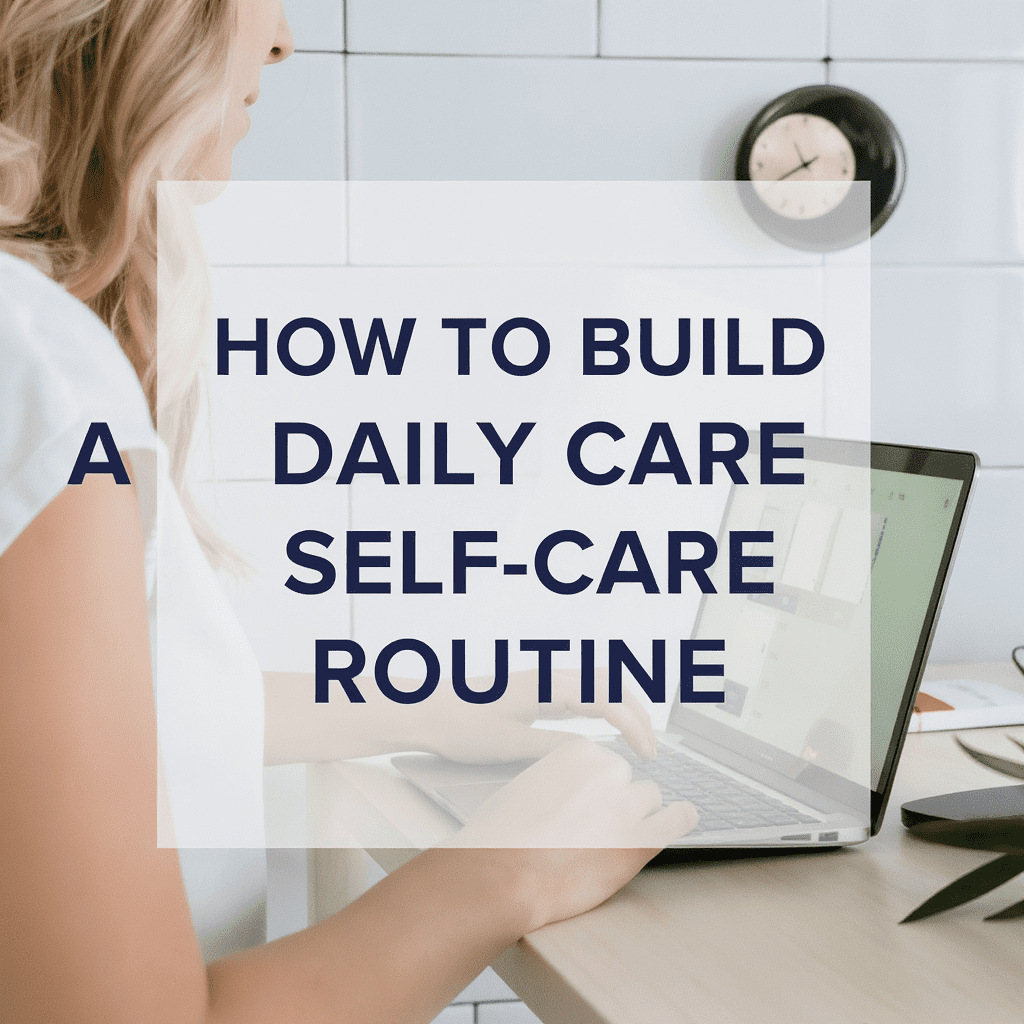
Main Points
Scheduling just some minutes of your day to tend to self-care might do wonders to your mental state, vitality and emotional well-being. Whether stress is always there with you, or your life is not as demanding as running on an empty tank, you may need a customized self-care regime as the answer. Not only do you have five, maybe thirty spare minutes, but it is also essential to incorporate what controls your nervous system, what makes you happy, and what helps your practice of restoration.
This guide will help you come up with a self-care daily routine that will appeal to you and fit your time. You will also learn to find a right balance between mental, physical, emotional health, how to follow the routine with simple tools, how to adjust the plan to the season changes without taking the balance of your wallet. It is an investment in your well-being. Alright, we will let us begin!
Balancing 5-Min vs. 30-Min Self-Care Routines
Quick 5-Minute Routines for Busy Days
Even the busiest schedules have room for five minutes of self-care. Small but impactful practices can soothe your mind, energize your body, and brighten your emotions.

- Mental Care:
- Take a few deep breaths to center yourself.
- Try a 5-minute guided meditation using an app.
- Journal one positive thought or gratitude from your day.
- Physical Care:
- Do simple stretching exercises to loosen tense muscles.
- Drink a glass of water mindfully for hydration and mental clarity.
- Practice a quick face massage to relieve stress.
- Emotional Care:
- Listen to a favorite song that lifts your spirit.
- Send a thoughtful text to someone you care about.
- Smile in front of a mirror—it can shift your mood.
Indulgent 30-Minute Routines for Deep Restoration
If you can set aside 30 minutes, you can dig deeper into restorative practices and joy triggers.
- Mental Care:
- Read a chapter of a thought-provoking book.
- Engage in a creative hobby like painting or writing.
- Set goals or reflect on personal growth with a journaling session.
- Physical Care:
- Commit to a 30-minute yoga or at-home workout session.
- Prepare a nourishing meal.
- Take a relaxed, tech-free nature walk.
- Emotional Care:
- Watch a calming or inspiring TED Talk.
- Spend uninterrupted time with a loved one.
- Explore your emotions through art or music.
The key to success is to honor how much time you truly have without feeling guilty for lighter days.

The Essentials of Balanced Self-Care
Self-care isn’t one-size-fits-all, and balance is crucial. Here’s how to approach mental, physical, and emotional well-being holistically.
Mental Self-Care
- Why It Matters: Your mind sets the tone for your day.
- Ideas:
- Listen to a podcast that inspires or educates.
- Dedicate time to mindfulness practices to lower stress.
- Write down three goals for the day to focus your mind.
Physical Self-Care
- Why It Matters: Caring for your body fuels your overall well-being.
- Ideas:
- Opt for 10-15 minutes of daily movement.
- Prioritize sleep by creating a calming nighttime routine.
- Try postural alignment techniques to relieve the day’s tension.
Emotional Self-Care
- Why It Matters: Your feelings influence decisions and relationships.
- Ideas:
- Indulge in activities like reading fiction or writing letters to yourself.
- Share your thoughts with a trusted confidant or therapist.
- Identify joy triggers and find ways to incorporate them daily.
Balancing all three ensures you’re nurturing every part of yourself.
Affordable Self-Care Ideas
There is no need to go to a costly spa resort in order to rejuvenate. The following are cost-effective tips on taking care of yourself without spending much:
Make a soothing cup of tea and give a conscious rest.
Take a free flow on the internet with yoga videos.
Have your own DIY spa night by whipping up something out of what you already have- something like natural face masks: oatmeal, honey etc.
Use free community classes, audiobooks and books in local public libraries.
The next one is creating a playlist of soothing music or motivational hits to recharge your emotions.
The healthiest returns can be seen in the small investments of time.
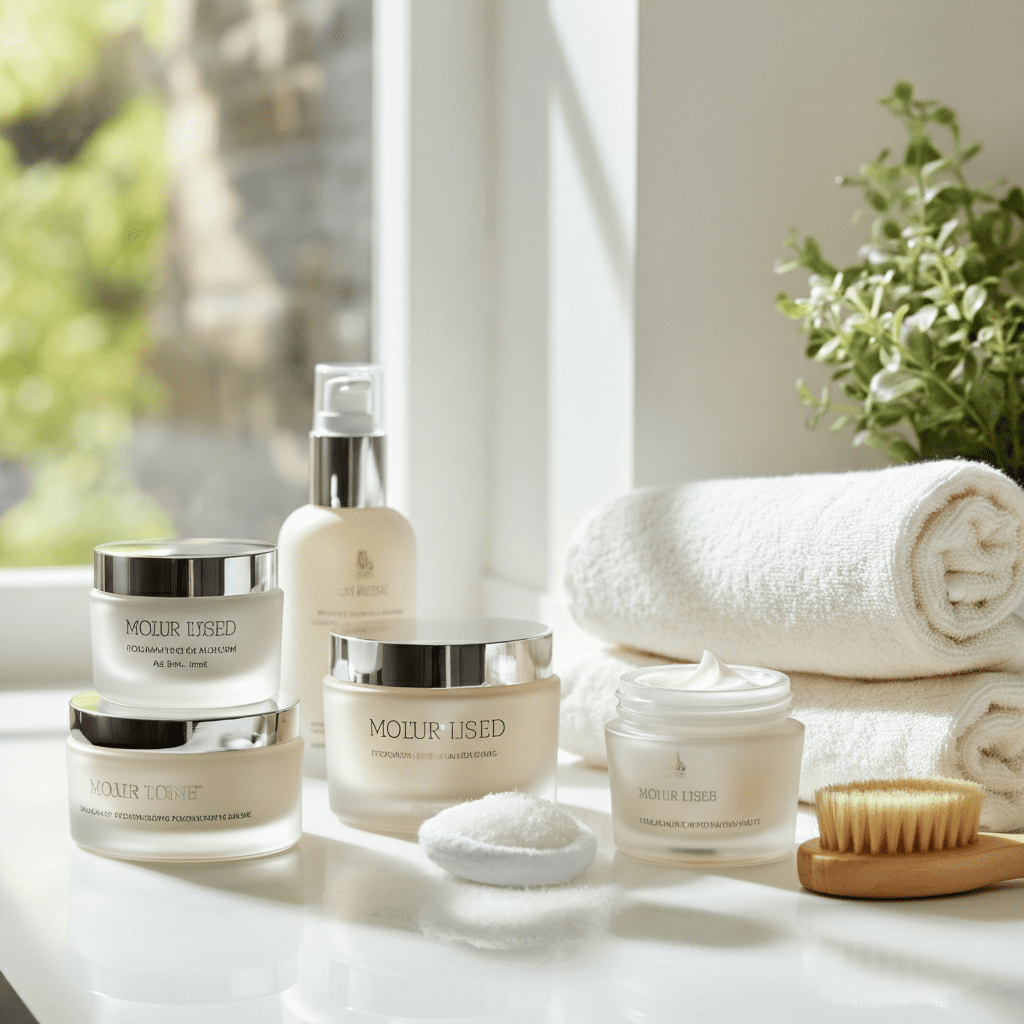
How to Make Self-Care a Lasting Habit
Building a routine takes consistency and intention. Use these strategies to turn self-care into a daily habit:
- Use Tracking Tools:
-
- Download apps like Habit Tracker or Streaks to log activities.
- Cross off daily self-care moments on a paper checklist for satisfaction.
- Pair Self-Care with Existing Habits:
-
- Perform a quick breathing exercise while brushing your teeth.
- Stretch while waiting for your coffee to brew.
- Start Small:
-
- Committing to just five minutes each day reduces overwhelm.
- Gradually increase time as self-care becomes second nature.
- Set Reminders:
-
- Schedule self-care moments like any other important appointment.
- Use calendar alerts for activities like reflection or relaxation.
Remember, self-care isn’t just a luxury—it’s a commitment to your long-term vitality.
Seasonal Adjustments to Self-Care Routines
Your self-care needs might shift with the seasons. Here’s how to adapt accordingly:
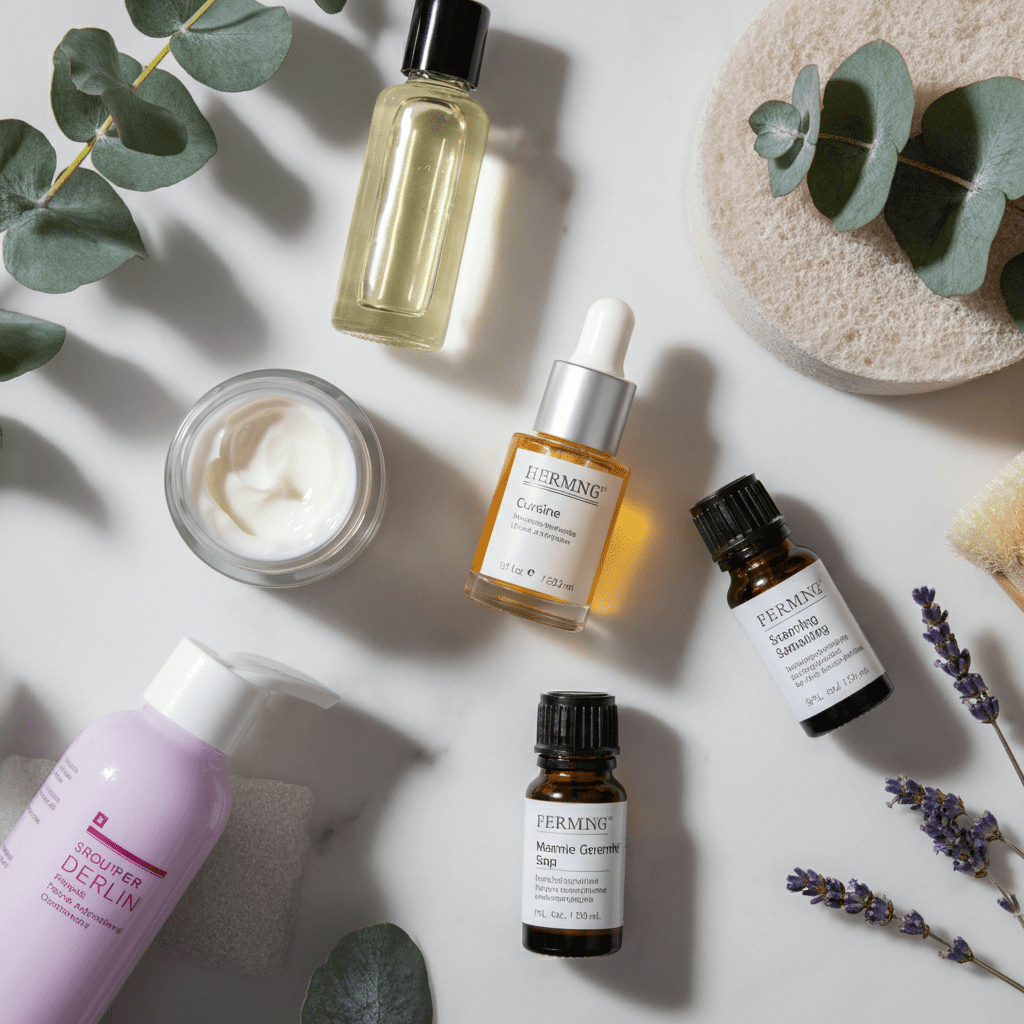
Spring and Summer
- Spend time outdoors to soak up vitamin D.
- Try gardening or hiking to connect with nature.
- Hydrate frequently and incorporate lighter, refreshing food options.
Fall and Winter
- Opt for cozy, warming self-care practices like sipping herbal teas.
- Use light therapy to combat seasonal blues.
- Focus on indoor activities such as baking or heated yoga sessions.
Responding to the changing seasons ensures your self-care remains both practical and restorative.
Year-Round Self-Care Tips
Practice proper quality sleep by having a regular bed time routine.
Do mindfulness or meditation exercises to deal with stress effectively.
Be active through the activities that you feel appropriate according to your level of fitness, either in or outside.
Provide your body with a healthy diet and drink a lot of water no matter what season it is.
Try to have a routine when it comes to your hobbies or activity that makes you feel good and relaxed.
Creating a self-care plan that would last throughout the year also means that you will not neglect your health and well-being, regardless of the season or situation.
People Also Ask
1. What is self-care and why is it important?
Self-care refers to activities that support your physical, mental, and emotional health. It’s essential because it strengthens resilience, energy, and overall well-being.
2. How can I create a self-care routine if I’m too busy?
You can start with 5-minute routines like deep breathing, journaling, or stretching. The key is to prioritize small, simple actions that fit into your existing schedule.
3. What are the best affordable self-care practices?
Affordable self-care practices include meditating, walking in nature, using free apps for mental wellness, and creating DIY relaxation experiences at home.
4. How do I make self-care a daily habit?
You can start small, use tracking tools to log progress, and pair self-care activities with existing habits like morning coffee or bedtime routines.
5. What kind of self-care activities can I do in different seasons?
Adapt based on climate, focusing on outdoor activities like hiking in summer and cozy indoor practices like baking or journaling during colder months.
6. Can self-care help with stress management?
Yes, self-care activities like mindfulness, movement, and connecting with loved ones lower stress and promote nervous system regulation.
Conclusion
Developing a daily self-care routine is not a day spa; it is one of the best investments to stay healthy and happy. You may only have five minutes or need a half-hour to recover your mental, physical and emotional health, you only have to say five or half an hour and there is a possibility of having a doable self-care activity at hand. Begin with a small step, measure your progress and keep your practices in line with the seasons so that your habit would keep getting better with you. Just bear in mind that self-care is not a universal method. What another person succeeded with may not sound right to you and it is absolutely fine.
Follow the voice of your body and mind and do not be afraid to explore until you find what actually feeds you. With time, these habits are going to become a second nature and you will see how doing little things every day and consistently can result in dramatic improvements of the overall quality of your life. Put yourself first since you need the time, energy, and attention that self-care has to offer you.
It is the best day to focus on yourself. It is the time to start creating your own personal self-care plan: you deserve it!
M. Saim Akhtar
Certified Health Content Specialist at HealthBoostMax. INFS-qualified nutrition researcher with 5+ years of evidence-based health writing. Focus areas: health wellness Information, preventive medicine, nutritional biochemistry, and fitness science.
Men’s & Women’s Health
How to Balance Hormones Naturally for Women | Ultimate Hormone Balance Guide (2025)

Table of Contents
Hormonal balance is vital towards the overall well-being of the female, in that it has an impact on the energy level, mood, general skin and even the weight of the female. When the hormones, including testosterone, estrogen, cortisol and thyroid hormones, get out of the rhythm, it seems that everyday life is an uphill game. Other conditions that usually accompany this disproportion and may have powerful effects on your physical and emotional well-being are elevated levels of estrogens, adrenal burnout, as well as thyroid thyroid diseases.
Fortunately, there are certain natural solutions that will help you adjust the hormonal balance of your body. Pour in some hormone-friendly food options, some real-life inspired lifestyle shifts and the power of herbs and supplements, and you will get in positive control of your hormone balance. This book is a no-nonsense, evidence-based guide to ensure that you can take the lead in regulating your own hormonal happiness and feel fine.
Top Foods for Hormone Balance
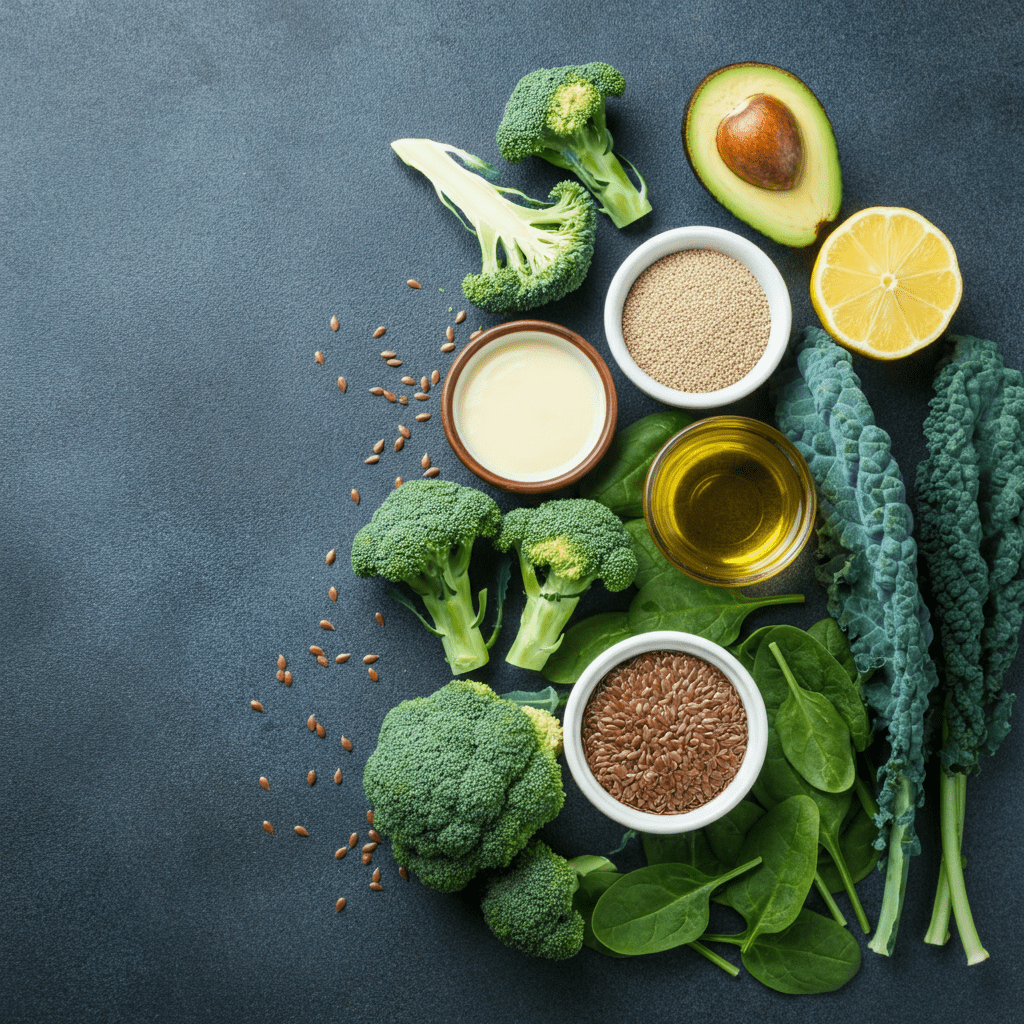
- Cruciferous Vegetables
Cruciferous foods (e.g. broccoli, cauliflower, kale, brussel sprouts) carry such mighty compounds as indole-3-carbinol (I3C). This nutrient aids the detoxification of the liver, and your body can clear up the extraneous estrogen. Adding these vegetables regularly to the diet can reduce estrogen dominance and restore hormonal balance. - Flaxseeds
Flaxseeds are also an excellent source of the lignans, compounds that simulate estrogen in the body and ratify the hormonal swings. They also contain good levels of omega-3 fatty acids that also help in the reduction of inflammation, benefiting the health of the endocrine system. Add finely crushed flaxseeds to oatmeal or supplement smoothies. - Healthy Fats
Hormones are made with the help of fats. Olive oil, fish, avocado and other sources containing omega 3s and monounsaturated fats ensure the adrenal glands are nourished, and levels of cortisol are lowered. Good fats promote healthy brainwork, stabilization of moods, and skin. - Fermented Foods
What is related to hormone functioning is your gut. Healthier microbiome through foods that offer probiotics, such as yogurt, kimchi, and sauerkraut, contribute to the production and balancing of such hormones as serotonin and insulin. - Vitamin-Rich Fruits
Berries, citruses, pomegranates are fruit varieties which contain large amounts of antioxidants and necessary vitamins, such as Vitamin C. These nutrients fight against oxidative damage, inflammation, and improve the overall endocrine wellness.
Lifestyle Changes for Hormone Health
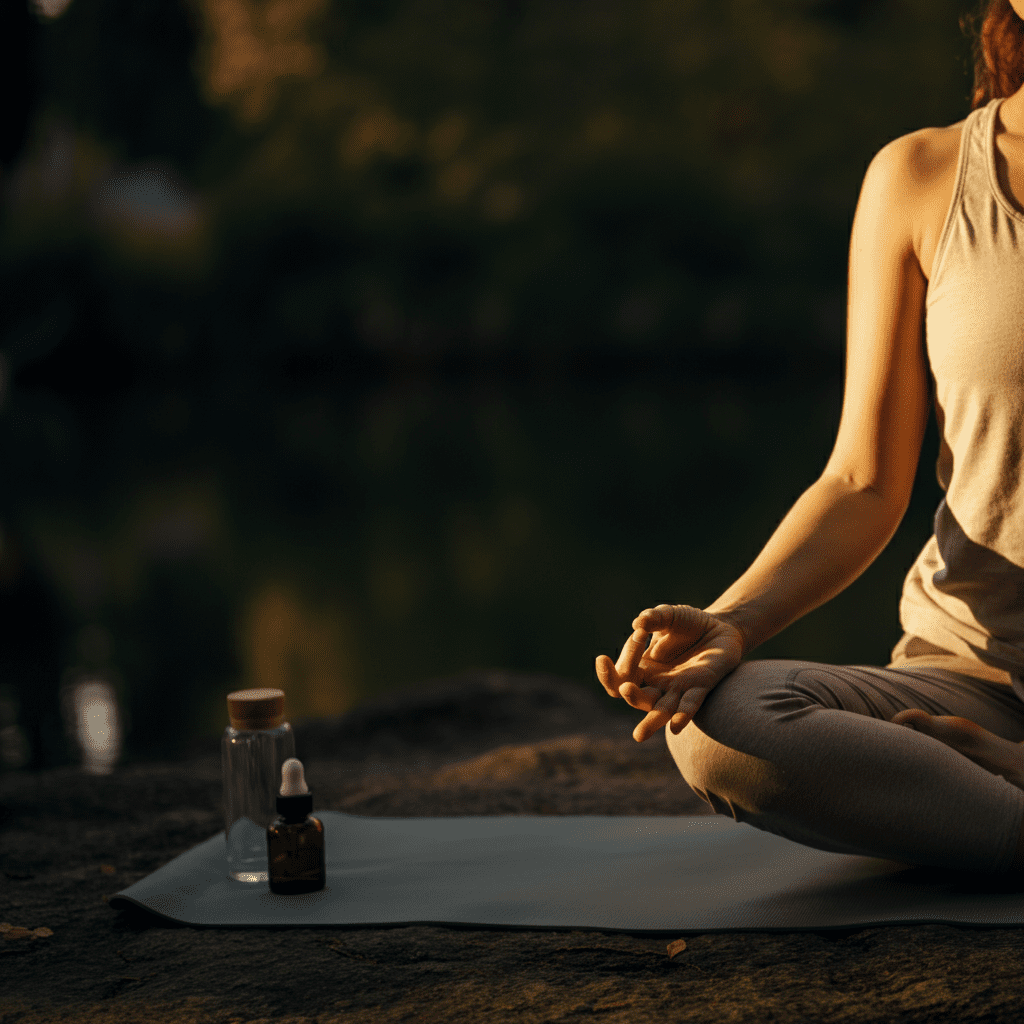
Prioritize Sleep
Sleep is the keystone of controlling the hormones. The insufficient amount of sleep influences the secretion of the cortisol, which promotes the enhancement of the stresses and obstructs the normal functioning of the other hormones. You have to attempt to have a good 7-9 hours of sleep at night and create a routine bedtime that would preserve your circadian clock.
-Aim for 7-9 hours of quality sleep per night.
-Benefits: Proper rest is essential for cortisol regulation and hormonal production.
How to Deal with Stress
The drawn out pressure forces the cortisol crisis to reach high limits, causing a distraction in the entire course of the endocrine organs. Such simple things as deep-breathing exercises, meditation and yoga can promote emotional health and reduce cortisol production. Even shy 10 minutes of mindfulness a day help.
- -Techniques: Yoga, meditation, or deep breathing exercises. -Benefits: Reducing stress levels can lower cortisol, helping to create a balanced hormonal environment.
Take It With Your Period
Knowing your menstrual cycle can help you form a balance in your activity, nutrition and self-care according to your body rhythms. As an example, emphasis on nutrient rich foods and low energy expenditure during the luteal phase where energy is low and elevated physical activity during the follicular phase where energy is high.
Stay Active Without Overtraining
Regular moderate exercises help regulate insulin, support to the thyroid, and reduce estrogen dominance. However, excessive intensive exercises can result in excess cortisol. Get together with strength exercise, aerobics and recovery activities (like yoga) and do your hormones a favor.
Herbs & Supplements

- Ashwagandha
Ashwagandha is an adaptational supplement that controls the cortisol levels and slows down the stress and fatigue levels. It also helps in the health of the adrenals which is important in hormonal balance. It is available in capsule or tea. - Maca Root
The Maca root is described to increase energy, aid procreation, and hormonal reproductive equilibrium. It is especially useful at perimenopause and menopause when the market level is not stable. One can mix the maca powder in a glass of smoothie or in some tea to reap the benefits. - Vitex (Chaste Tree Berry)
A herbal therapy known as vitex is a common medication in PMS symptoms relief and increasing progesterone. It operates through its effect on the pituitary gland to regulate menstrual periods and synthesis of hormones. - Evening primrose oil
Evening primrose oil is rich in gamma linolenic acid (GLA) and relieves the typical symptoms associated with estrogen imbalance, such as tender breasts and mood swings. - Magnesium
Magnesium is significant in more than 300 enzyme reactions including the hormonal processes. It is useful in battling stress, enhancing sleep, as well as blood sugar control. Try vitamins or foods such as spinach, almonds, and black beans since they are magnesium-rich foods. - Supplements
- Omega-3 Fatty Acids:
- Sources: Fish oil or algae supplements.
- Benefits: Help manage inflammation and support hormonal balance.
- Vitamin D:
- Benefits: Essential for hormone production and immune support.
Signs of Hormones Imbalance
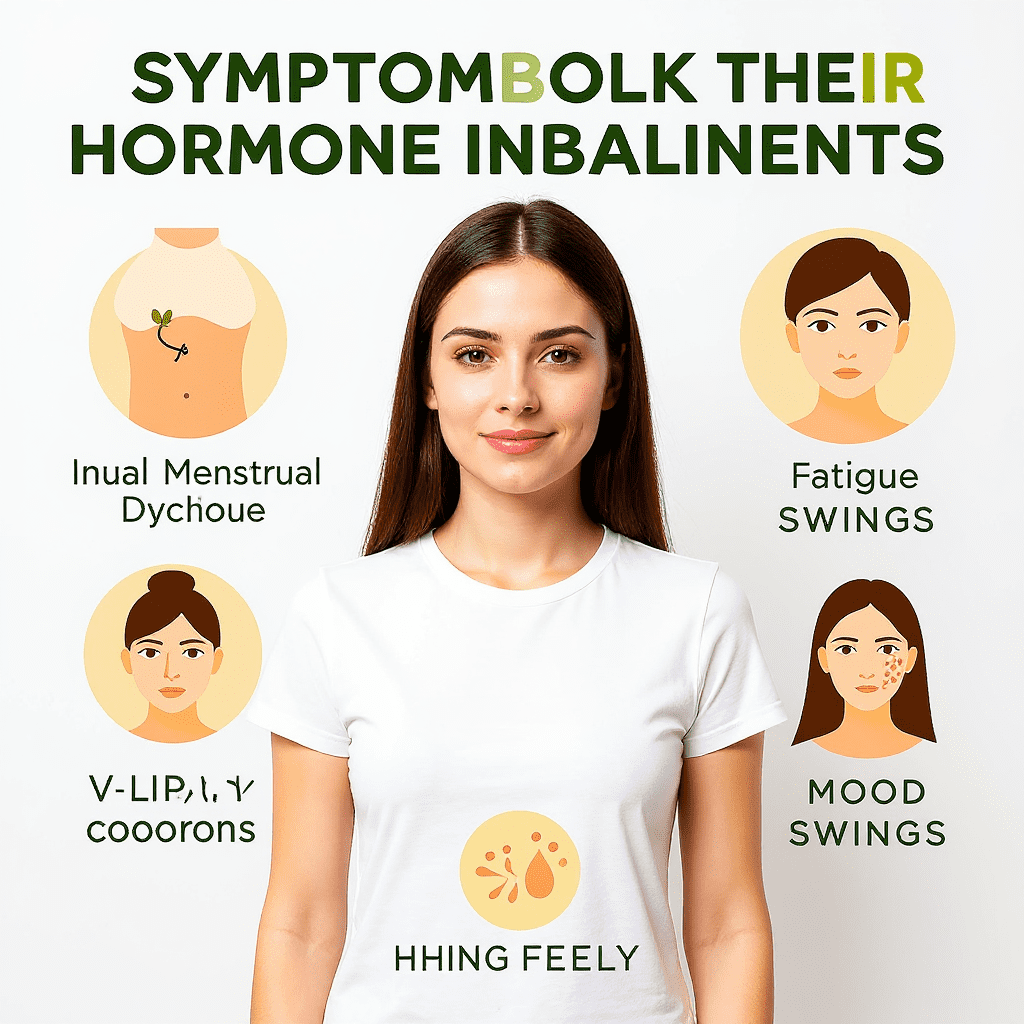
- Irregular Menstrual Cycles
Frequent, infrequent, or missed periods may point to issues like PCOS or thyroid dysfunction.
- Fatigue
Persistent low energy could indicate cortisol dysregulation or an underperforming thyroid.
- Weight Gain or Loss
Unexplained changes in weight could signal insulin resistance or problems related to cortisol.
- Mood Swings
Frequent emotional highs and lows may point to estrogen or progesterone imbalances.
- Skin Problems
Acne, dryness, or excessive oiliness can often be traced back to hormonal inconsistencies.
How to Track Progress

1. Keep a Symptom Journal
Document changes in mood, sleep patterns, energy levels, and physical symptoms daily. Over time, this can reveal patterns and track improvements as you adjust your lifestyle.
2. Lab Testing
Regular bloodwork or saliva tests can provide insights into your hormone levels. Focus on estrogen, progesterone, testosterone, cortisol, and thyroid hormone levels to get a full picture of your endocrine health.
3. Use Technology
Apps designed for menstrual and hormonal tracking can simplify the process. Many tools offer reminders and insights into your cycle phases, helping you align activities with your natural rhythms.
4. Work with a Specialist
Partnering with an endocrinologist or holistic health practitioner can ensure you receive personalized guidance based on your specific hormone needs.
FAQs
- What foods regulate hormones in women?
Hormone-regulating foods include cruciferous vegetables, flaxseeds, fatty fish, and fermented foods.
- What are symptoms of hormonal imbalance in women?
Common symptoms include irregular periods, fatigue, mood swings, and unexplained weight changes.
- How does stress affect hormones?
Stress elevates cortisol, which can disrupt adrenal function and imbalance other hormones like estrogen and testosterone.
- How can I balance my hormones during perimenopause?
Focus on consuming phytoestrogen-rich foods (like flaxseeds), managing stress, and incorporating adaptogenic herbs such as maca root or ashwagandha.
- Can lack of sleep cause hormonal imbalance?
Yes, inadequate sleep disrupts cortisol and melatonin rhythms, negatively influencing thyroid and reproductive hormones.
Summary
Natural balancing of your hormones requires a complex approach, which can be achieved through herbs and supplements, specially sourced nutrition as well as a mindful change in lifestyle. Sleeping, getting rid of stress, consuming hormone-nurturing foods and being conscious of your body messages is a good way to give yourself power to rein back control of your health. Take it one step at a time, and today make one or two changes in your routine, and record some progress somewhere so as to mark incremental changes in a celebratory fashion.
Be in control of your health now- the healthier and happier you is attainable. When you are ready to have more detailed recommendations, it is high time you refer to a health care expert to develop a personal hormone-balancing program.
M. Saim Akhtar
Certified Health Content Specialist at HealthBoostMax. INFS-qualified nutrition researcher with 5+ years of evidence-based health writing. Focus areas: health wellness information, preventive medicine, nutritional biochemistry, and fitness science. Content is for informational purposes only!
Healthy Lifestyle & Nutrition
How to Detox Your Body Safely at Home in 2025
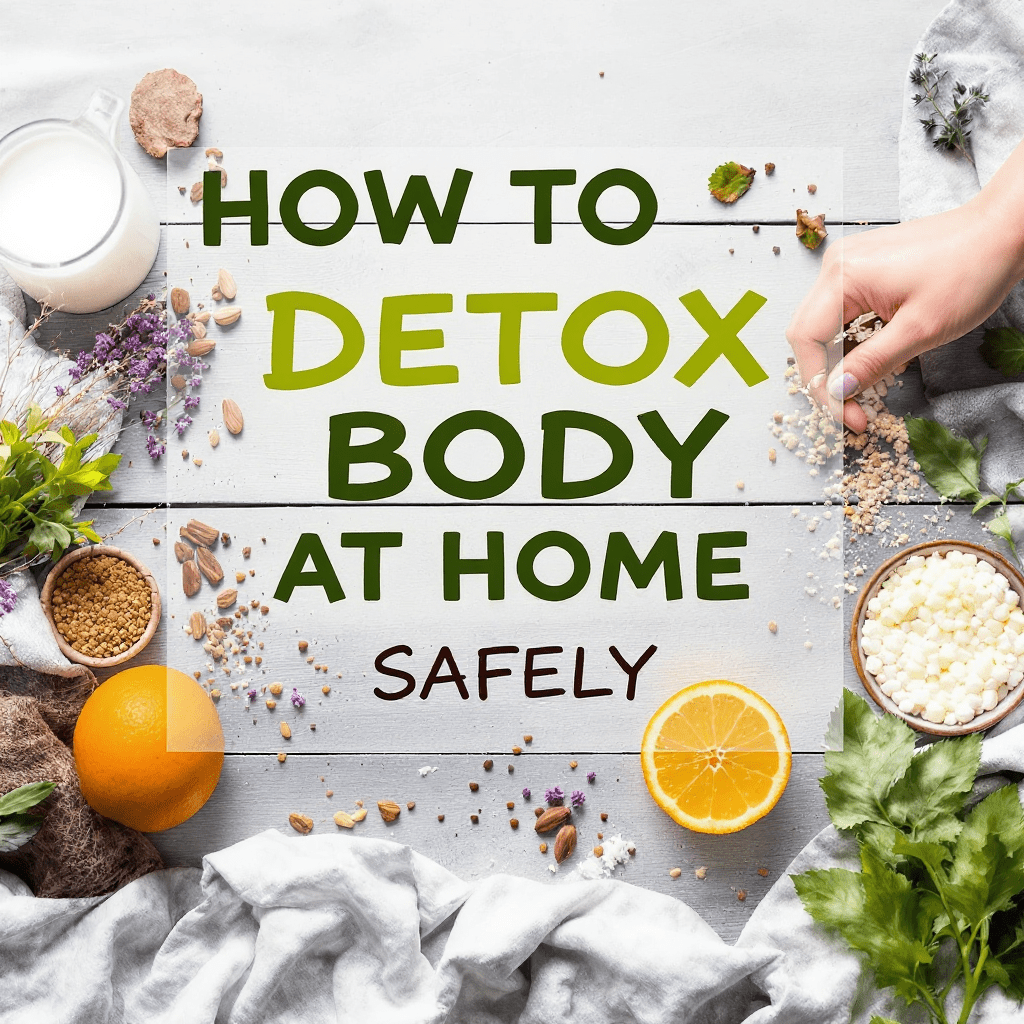
Table of Contents
Detoxifying your body can seem overwhelming, but done correctly, it can revitalize your health and boost your energy. The key is a safe science-backed approach that nourishes your body, not starves it. This guide explains how to detox your body safely at home by supporting your liver, avoiding harmful toxins, and creating a sustainable plan. From liver-loving superfoods like beets and turmeric to a simple 7-day detox guide you can follow, you’ll get practical tips that fit into your daily life.
Bursting the myths along the way we will be addressing the fads of detox including extreme fasting and other detox regimes, and telling you what really works in stimulating lymphatic drainage, gut cleansing and cellular detoxification. Adopting a new healthy lifestyle, or simply wanting to preserve the results you already achieved, you can find evidence-based information launched in this guide to trust. The detoxification process is about to begin!
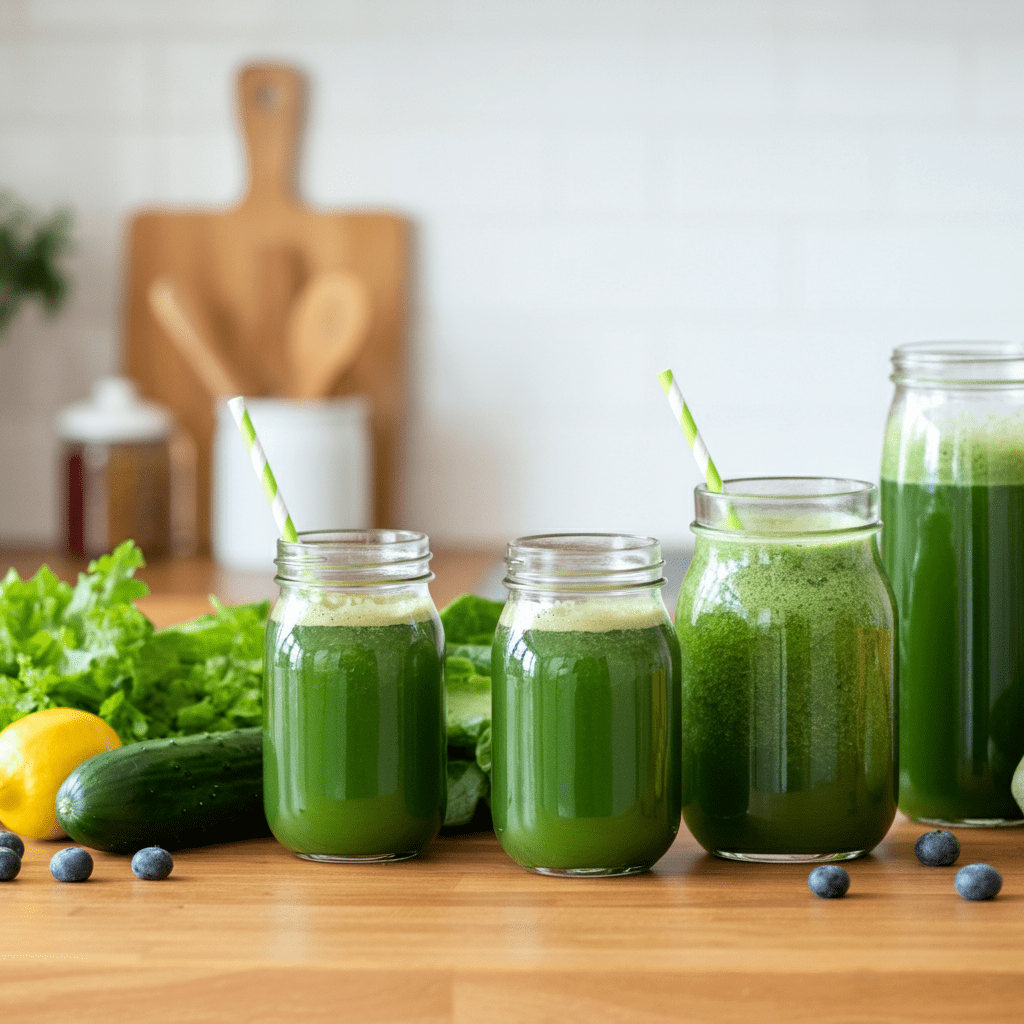
The Importance of Detoxification
Detoxification, or the process of eliminating toxins from the body, is a vital aspect of overall health and well-being. Our bodies are constantly exposed to harmful substances such as pollution, pesticides, processed foods, and chemicals in everyday products. These toxins can build up in our system over time and lead to various health issues.
While our bodies have natural detoxification processes through organs like the liver and kidneys, they can become overwhelmed with the amount of toxins we are exposed to. This is where intentional detoxing comes into play.
By giving our bodies a break from these harmful substances and providing it with proper nutrition, we allow our natural detoxification processes to work
Liver-Supportive Foods for Detox
Your liver is your body’s powerhouse for detoxification. Supporting it with nutrient-dense foods can boost its efficiency and speed up the detox process. Here are three liver-friendly foods you should add to your routine:

1. Beets
Beets are rich in antioxidants, betalains, and nitrates, which help reduce inflammation and support liver function. They also help your liver break down toxins and flush them from your system. How to use: Roast beets for a salad, blend them into smoothies, or juice them for a daily detox drink.
2. Garlic
Garlic contains sulfur compounds that activate liver enzymes, helping your body eliminate toxins. It also has selenium, an essential mineral that boosts detoxification. How to use: Add minced garlic to stir-fries, soups, or salad dressings for a healthy dose of detox-supportive nutrients.
3. Turmeric
This golden spice contains curcumin, which stimulates the production of bile and helps your body break down fats and toxins. It’s also a potent anti-inflammatory. How to use: Sprinkle turmeric in your dishes, brew it in tea, or take it as a supplement.
Toxins to Avoid
Detoxification isn’t just about what you add—it’s also about what you avoid. Harmful toxins in your environment can hinder detox efforts. Here are common offenders and tips to minimize exposure:
1. BPA (Bisphenol A)
Found in plastics and food packaging, BPA disrupts hormones and can accumulate in the body. Tip: Use glass or stainless steel containers and avoid microwaving plastic.
2. Pesticides
Pesticides on your fruits and vegetables may harm your liver over time. Tip: Wash your produce thoroughly and choose organic whenever possible.
3. Processed Foods
Artificial additives and preservatives add to your body’s toxin load. Tip: Stick to whole, minimally processed foods to support natural detoxification.
A Simple 7-Day Detox Plan
This 7-day detox plan is designed to be gentle and effective, focusing on meals and practices that rejuvenate your body without extreme measures.
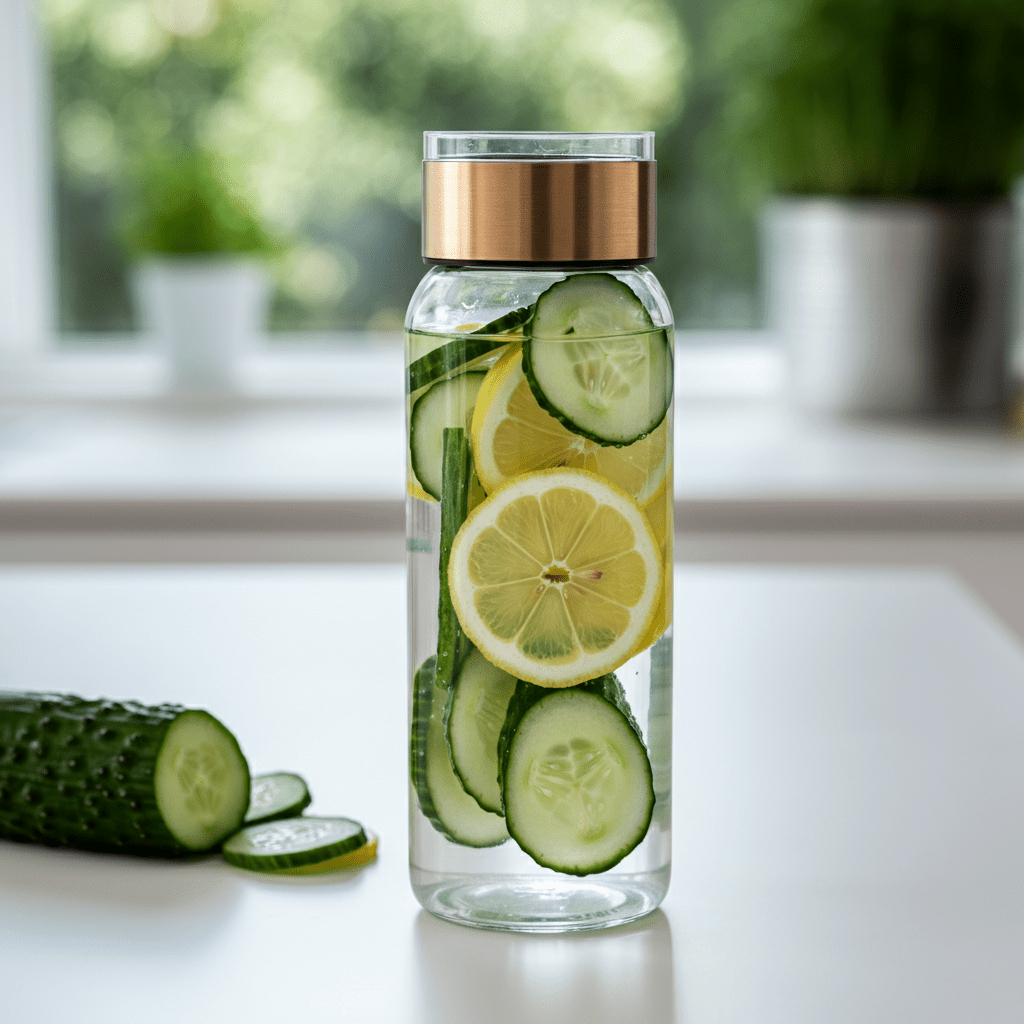
Day 1-2
- Breakfast: Green smoothie with spinach, banana, and a dash of spirulina.
- Lunch: Quinoa salad with beets, avocado, and lemon-tahini dressing.
- Dinner: Baked salmon with steamed broccoli and turmeric-infused rice.
- Hydration: Aim for 2-3 liters of water daily, infused with cucumber or lemon for flavor.
Day 3-4
Introduce more fiber for gut cleansing.
- Breakfast: Overnight oats with flaxseeds and fresh berries.
- Lunch: Garlicky chickpea soup with fresh herbs.
- Dinner: Stir-fried tofu with garlic, turmeric, and stir-fry veggies on brown rice.
Day 5-6
Focus on hydration and lighter meals.
- Breakfast: Chia pudding with almond milk and mango.
- Lunch: Mixed greens topped with beets, roasted sweet potatoes, and tahini-lime dressing.
- Dinner: Zucchini noodles with garlic-tomato sauce and fresh basil.
Day 7
Ease back into a balanced diet.
- Breakfast: Fruit salad with a side of green tea.
- Lunch: Lentil and kale soup.
- Dinner: Grilled chicken breast with asparagus and quinoa.
Daily Practices: Add light exercise, meditation, and dry brushing to stimulate lymphatic drainage and boost circulation.
Myths vs. Facts
When it comes to detoxing, misinformation runs rampant. Here’s what you need to know:
Myth 1: Extreme Fasting is Necessary
Fact: Prolonged fasting can deplete your energy and harm your metabolism. A nourishing diet is more effective for detoxing.
Myth 2: Detox Teas Are a Quick Fix
Fact: Many detox teas are laxatives in disguise. They might reduce water weight temporarily, but they don’t remove toxins.
Myth 3: Sweating Removes Toxins Faster
Fact: While sweating is healthy, the liver and kidneys do the heavy lifting when it comes to toxin removal. Focus on hydration instead.
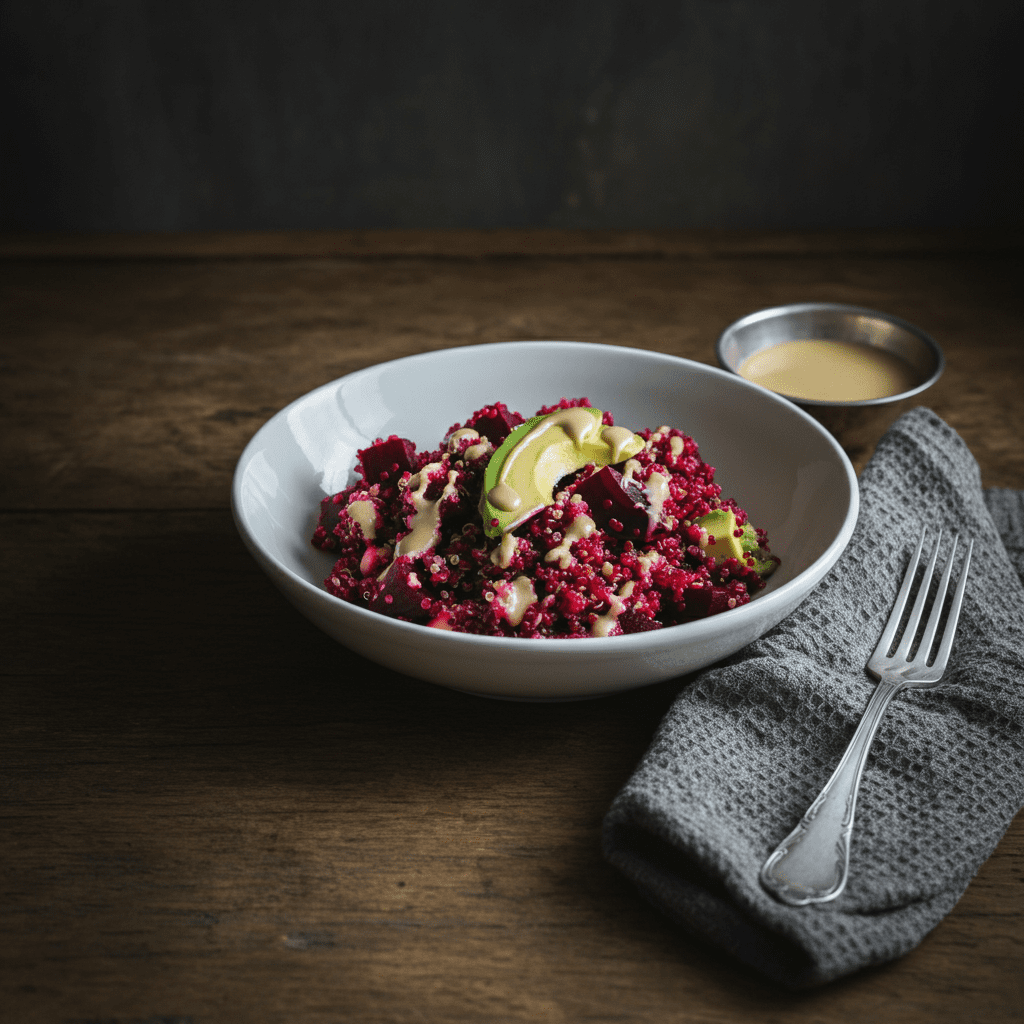
Maintaining Results Long-Term
A safe detox is just the first step. To keep your body healthy long-term, consider these tips:
1. Balanced Nutrition
Focus on whole foods rich in antioxidants, such as leafy greens, fruits, nuts, and seeds. Avoid processed foods and added sugars.
2. Regular Exercise
Physical activity not only supports overall health but also boosts circulation and lymphatic drainage, aiding your body’s detox systems.
3. Stay Hydrated
Drink plenty of water daily to help your kidneys flush out toxins effectively.
4. Stress Management
Chronic stress can overload your body with cortisol, which impacts detox processes. Practice mindfulness or yoga to keep stress in check.
5. Adequate Sleep
Sleep is your body’s prime detox time. Aim for 7-8 hours a night to allow proper cellular repair and recovery.
6. Limit Alcohol and Caffeine
Both alcohol and caffeine can put a strain on your liver and kidneys, hindering their ability to effectively detoxify the body. Limit your intake of these substances or opt for healthier alternatives like herbal teas or sparkling water.
7. Eat a Balanced Diet
Incorporating plenty of fruits, vegetables, whole grains, and lean proteins into your diet provides your body with essential nutrients necessary for optimal functioning and detoxification
People Also Ask Questions
Q1: What is the safest way to detox your body at home?
The safest way is through a balanced diet of nutrient-rich foods, proper hydration, and avoiding toxins like BPA and pesticides.
Q2: How long does it take to detox your body naturally?
It varies, but incorporating liver-supportive foods and hydration into your diet can show benefits within 7 days.
Q3: Can I detox my body without fasting?
Yes! A healthy detox focuses on nourishing meals, not deprivation, and includes practices like light exercise and good sleep.
Q4: What foods are best for detoxing the liver?
Foods like beets, garlic, and turmeric are excellent for supporting liver detoxification.
Q5: Are detox teas effective?
Most detox teas are not effective for real detoxification—they mainly serve as laxatives and don’t remove toxins.
Conclusion
Safe detoxing is the concept of feeding your body, making prudent decisions to prevent toxins, and making a long-term journey to wellness. You can ensure success by building liver-friendly foods, staying away from environmental toxins, and doing a basic 7- days quick fix program. The key? Detox is not a fad. Focus on something scientific and aimed at the improvement of your general well being.
Keep in mind that each of the small steps in the movement to healthier lifestyle counts. Detoxing does not have to be an overwhelming process, rather it should be all about striking the balance and giving your body what it needs once in a while. Be aware of your body, be regular and make healthy decisions and you should take care of yourself. Commit to the process and the patient will discover habits that will lead to a healthier life.
Take charge of your wellness today! Start your detox journey with these easy tips and feel the difference in your energy, clarity, and health.
M. Saim Akhtar
Certified Health Content Specialist at HealthBoostMax. INFS-qualified nutrition researcher with 5+ years of evidence-based health writing. Focus areas: health wellness Information, preventive medicine, nutritional biochemistry, and fitness science.
-

 Healthy Lifestyle & Nutrition3 months ago
Healthy Lifestyle & Nutrition3 months agoBest Foods to Boost Testosterone Naturally in 2025
-

 Healthy Lifestyle & Nutrition2 months ago
Healthy Lifestyle & Nutrition2 months agoHow to Boost Your Immune System Naturally (2025)
-

 Healthy Lifestyle & Nutrition3 months ago
Healthy Lifestyle & Nutrition3 months agoTop Superfoods for Energy in 2025 – Boost Your Vitality
-

 Disease Prevention & Health Tips3 months ago
Disease Prevention & Health Tips3 months agoCOVID Vaccine Heart Risk Warnings and Safety Update in 20025
-

 Fitness & Exercise3 months ago
Fitness & Exercise3 months agoSimple Exercises to Boost Flexibility with Arthritis
-

 Fitness & Exercise2 months ago
Fitness & Exercise2 months agoHealthy Meal Plans for Men | 3,000-Calorie Muscle-Building Ultimate Guide
-

 Men’s & Women’s Health2 months ago
Men’s & Women’s Health2 months agoHow to Balance Hormones Naturally for Women | Ultimate Hormone Balance Guide (2025)
-

 Mental Health & Wellness3 months ago
Mental Health & Wellness3 months agoQuick Stress Relief Techniques for Instant Calm(2025)
-

 Fitness & Exercise3 months ago
Fitness & Exercise3 months agoCardio Exercises for Weight Loss at Home in 2025
-

 Healthy Lifestyle & Nutrition2 months ago
Healthy Lifestyle & Nutrition2 months agoHow to Detox Your Body Safely at Home in 2025

